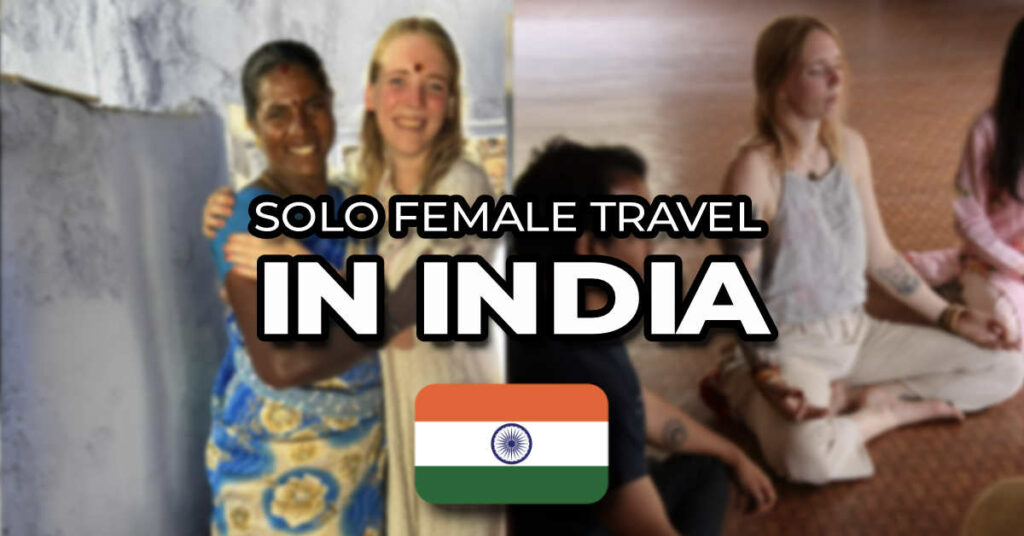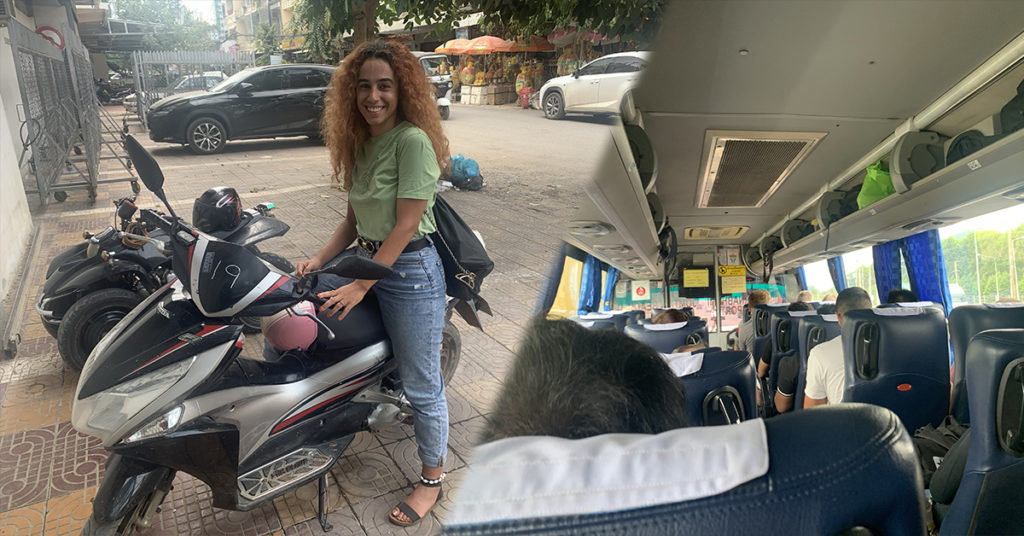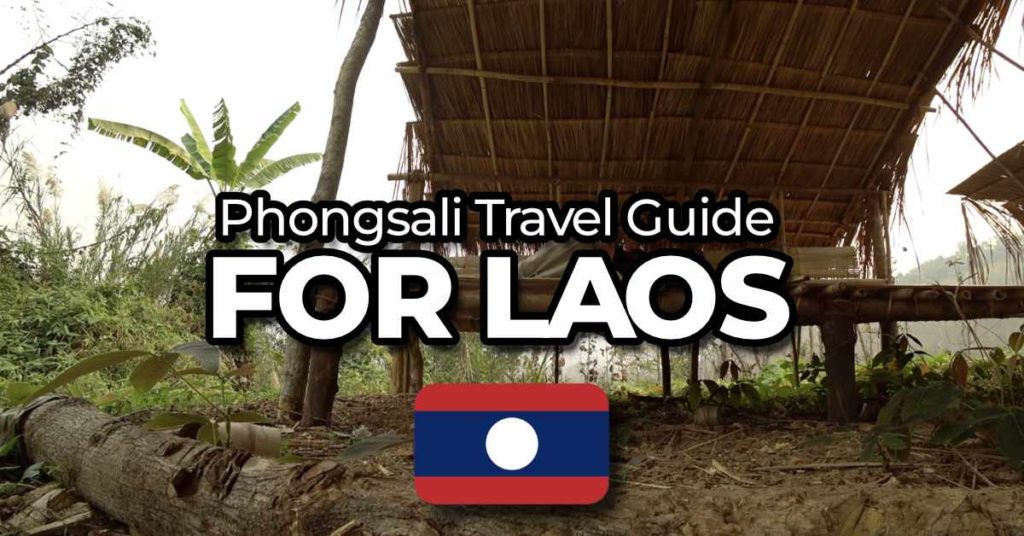Mentioning solo female travel in India often brings up horror stories, and not without reason. But is it really as bad as portrayed? Is it impossible for women to travel alone in India? The answer to that is certainly no. I’ve been on many trips to India over the past five years, and have been living here on a permanent basis for the last year. After mainly reading surface-level opinions formed from brief visits online, I felt the urge to delve deeper into the reality of female solo traveling in India and give you a true unfiltered view of what it’s really like.
So how do women travel safely in India? In this article, I’ll share it all from dealing with catcalling, standing up for yourself, and traveling safely on trains and public transport as well as insights into the greatest places for solo travelers who happen to be women.
Solo Female Travel India Key Takeaways:
- Safety Precautions: While India can be a safe destination for solo female travelers, it’s crucial to exercise caution, particularly at night. Avoid accepting invitations from strangers to ensure safety.
- Handling Catcalling and Staring: In India, especially in the northern regions, catcalling and staring are common experiences. It’s important to handle these situations with confidence and clear disapproval.
- Scam Awareness: Be vigilant about various scams, including those at fake tourist information centers, taxi and ridesharing scams, and begging scams. Knowing how to identify and avoid these scams is essential.
- Effective Bartering: Bartering is a part of the shopping experience in India. To avoid exploitation, it’s important to negotiate confidently and know when to walk away from a deal.
- Conservative Dress Code: Dressing conservatively is not only respectful of local customs but also a safety measure. Avoid wearing revealing clothes and opt for attire that is culturally appropriate.
- Healthcare and Medications: The quality of medical care varies across India, with better facilities in urban areas. Carry necessary medications and exercise caution when seeking healthcare, especially in remote areas.
- Healthy Eating Habits: Indian cuisine is inherently healthy, but be mindful of dishes high in oil and fat. Opt for grilled or tandoori options and explore the abundant vegetarian and vegan choices.
- Cultural Etiquette: Understanding and respecting cultural norms is key. This includes dressing modestly, avoiding smoking in public, and being cautious in interactions, particularly with men.
- Travel and Safety Tips: Avoid traveling at night and utilize women-only facilities when available. Opt for safer travel classes on trains and be mindful about sharing personal information.
Is Solo Female Travel in India Safe?
India is relatively safe for a solo woman – if you take the right precautions. It is less safe compared to other countries in Southeast Asia and might be a shock if you’ve come from a SEA country. To ensure your safety, be cautious of your surroundings, do not accept invitations from random people, and at night it’s best to walk in a group or with a male companion.
Please be aware of scams here as well as men who stare. Not all pursue, but those who do are quite forceful.
For instance, we personally experienced a couple of very difficult situations. Being followed (more than once); having unwanted advances from men; groups of drivers trying to forcefully keep us in the car after doubling the price (we did not leave the location before this); fake tourist offices not letting us leave and so much more.
Iris & Harry (site owners) from personal experience.
Please do not take this entirely as fact, but research online forums and you will see many other similar experiences
Not everyone is bad, and there are many good people in India who are happy to help. However, (and we hate to say this), it really is a place where you should have your guard up and not be quick to trust people as many want to scam you or take you for a fool.
This does not mean you will have the same experience and there are many people who have positive experiences. However, most also seem to have their fair share of bad experiences among those too.
Please be aware as a solo female traveller.
Catcalling, Staring & How To Deal With It For Solo Female Travellers
Catcalling and staring are prevalent in India, unfortunately. As a woman, you’re likely to encounter unwelcome attention in the form of catcalls, unnecessary comments, or prolonged stares. While it’s widespread across the country, in my experience and that of many others, northern regions like Delhi, Uttar Pradesh, and Haryana witness a higher frequency of such behavior. However, it’s not absent in places like Mumbai, either; stares are common but less unsettling compared to the north, from what I’ve observed personally.
Foreign women are often looked upon as ‘easy’. Because of the prevalence of porn in the country, along with the way foreigners are dressed and raised in an often open-minded society, some men in India think that it indicates that foreigners sleep around and don’t mind overt gestures of flirting and eve-teasing. Of course, that’s absolutely not true.
On many occasions we were followed by men. We had men approach us in weird ways even though Harry was with me. Multiple times Harry had to shout and tell people to “have some f*cking manners”. Train stations at night were a nightmare, drunk men and one who rubbed his entire face all over, while staring and then sputtered the words “liippss” out of his mouth. Please be careful as a woman here. There are many accounts online of men being incredibly creepy with not only foreign women but Indian women as well.
Iris (website co-owner)
When faced with stares, I have a few strategies to help:
If it’s from a distance, I often turn away and try to ignore it. But if that doesn’t work and the staring goes on, I confront it by returning the stare, though note that it might not be the best strategy in secluded areas, which you should stay away from in any case. Some may respond with a smile, but I keep staring with a serious face. It’s crucial to show that their behavior isn’t acceptable and won’t make me feel uneasy. Standing tall and firm, you make it clear that you won’t tolerate disrespect. In more extreme cases, I use a hand gesture I picked up locally (turning my hand upside down and raising it in a twisted way), which signifies, “What do you want from me?” Interestingly – and thankfully – most individuals stop staring once I do it.
Outright catcalling isn’t very uncommon, either. I’ve had times that men would whistle, or say how pretty I looked, or whisper something on the same lines to their friends. I would sometimes respond in the early days, but now I mostly choose to ignore it and move on. It takes less effort and spares you from having a conversation with someone who doesn’t get that catcalling isn’t appropriate behavior in the first place.
There are multiple factors why stares and catcalling are so common in India. For instance, staring isn’t actually considered rude in India, like it is in most other cultures. It’s a belief that looking directly at someone is a sign of curiosity. And yes, I get stares from women as well, because they’re curious. However, some are not always simple curiosity.
Traditional gender roles and power dynamics contribute to this behavior as well. In some instances, men might feel entitled to express their interest or dominance in public places. The lack of sex education and education about respecting personal space and boundaries also plays a significant role in the high prevalence of this problem across India.
Scams You Need To Be Aware Of
As a female traveler in India, just being aware of potential scams floating around can help ensure a safer and more secure journey through this country. Here are some common scams to look out for and avoid.
Fake Tourist Information Centres
Video of Harry’s (website owner) experience of the fake tourist offices
Be cautious of unofficial or unauthorized tourist information centers. They often overcharge you for their services, provide false information, or promote certain shops for their own benefit. Many of the Tuk Tuks and Taxis are in on the scheme and get a commission if you purchase from them. There is only 1 official tourist office in Delhi and we have left it below. You will not be able to purchase anything from it.
I’ve personally had an experience with a stranger in Delhi who seemed to be nice enough to help me get to my destination. He got me a rickshaw to drop me to my destination, though as soon as I boarded it, it dropped me at a very sketchy, fake tourist centre. I noticed that it was a scam and didn’t get into the presumably fake office, though it could have ended way worse if I didn’t know about the common scams around India. A general rule to follow is not to trust any stranger right away, especially men.
When we stayed in Delhi we spent hours trying to get to the real office with everyone telling us that the next one was the real one. One tried to charge us $80USD for a night in a 3 star hotel and another tried to book us a $30 taxi for $80. After refusing to pay this price, he told us we couldn’t leave and started to get incredibly angry. When he was out of the room, we got our bags and left immeadietly. Would you believe it the next Tuk Tuk we got in was another scam! In the end we went to Starbucks, signed up for an IRCTC account and booked tickets directly there. We thoroughly recommend doing this instead and getting an Indian SIM card at the airport. All of this could have been avoided. So many tourists fall for this and it keeps the trade alive! Don’t fall for it!!
Harry & Iris (website owners)
Taxi And Ridesharing Scams
Try to use trusted taxi apps like Uber or Ola. Some taxi drivers you come across on the road might try to take a longer route to increase fares, claim that the meter doesn’t work, or overcharge, especially when they sense you’re travelling to India for the first time.
Watch out for Tuk Tuks and increasing of prices. We personally had a few bad experiences. One was where we bartered the clearly overpriced price down, he accepted, took us to the car, let us sit and then doubled the price. As he doubled the price I said “no not having that mate” and 3-4 men came around the Tuk Tuk, trying to push me back in and push the Tuk Tuk off so he could drive with me in the back. I pushed out of the situation with force. If in this situation you should do the exact same.
Begging Scams
You might already be aware of it, but let’s not forget to mention. While it’s not always a scam, be cautious of situations where beggars approach you with elaborate stories asking for money or assistance. Some may take advantage of your goodwill or distract you while someone else tries to pickpocket you.
When I was living in Pune, I wanted to do some good and give a beggar some groceries. We went to the store together and got a bag of flour as she asked. As soon as I walked away, though, I looked back and saw that she traded the flour back for the money I paid. In some cases, the money doesn’t stay with the person you give it too, but goes to so-called ‘gangs’ that control these groups. If you want to give something, it’s best to buy some street food, juice, or something similar instead of cash.
Unsolicited Help
Be cautious of people offering to help without you asking for it, especially in crowded areas or popular tourist spots. Some might offer to take your photo, guide you, or otherwise make it seem like they just want to help you, and at the end ask for payment. Same goes for porters at the airport, they come and act as if they just want to help with your heavy bag, and as soon as they’ve brought your bag to the taxi they demand a huge tip. It has happened to me twice, so especially look out for this one.
Fake Authority Figures
Some people might act as police officers or government officials, asking for identification or issuing fines they’re not authorized to, which could be a way to earn money out of you. Make sure to always ask for their identification and be cautious if something feels off.
How To Barter and Not Let People Take Advantage
Bargaining in India can be a fun and integral part of the culture. As a solo female traveler, it’s essential to navigate these exchanges smartly while ensuring you’re not taken advantage of. Here’s how:
- Understanding the Process: Bartering is common in local markets and smaller shops. Start by assessing the item’s worth by observing prices in different stores or asking locals. Consider the quality, demand, and the seller’s initial price.
- Engage Respectfully: Politeness and a smile can go a long way. Establish a friendly rapport with the seller. Respectfully express your interest while indicating you’re aware of fair prices.
- Know When to Walk Away: Be prepared to walk away if the price isn’t reasonable. Often, sellers will lower their price when they see a potential sale slipping away.
Some useful phrases to barter with are:
- Boht mehenga hai – It’s too expensive
- Kam karo – Lower the price
- Yeh kitane ka hai? – How much is this?
- Kya aap card late hain? – Do you accept card?
- Mujhe yeh chahiye – I want this
- Mujhe nahi chahiye – I don’t want it
- Phir aaunga – We’ll come again
- Dhanyawaad – Thank you
As for the general nature of people you’d encounter in these places, displaying confidence without being aggressive is seen as strength. Confidence can stop people from trying to take advantage of you. Being overly accommodating or appearing unsure about the value of items may be perceived as a weakness and potentially invite attempts to overcharge or pressure you into a sale.
To avoid being taken advantage of, it’s crucial to stand your ground firmly but respectfully. Be confident in your negotiation, know the value of the item, and be ready to walk away if the deal doesn’t feel safe or right.
Advice on Clothing
Dressing up appropriately is one of the most important steps to ensuring your safety and having an enjoyable journey across this unique nation. Women, especially, should dress up conservatively and cover themselves up properly – shoulders, belly, cleavage, and legs. Don’t wear crop tops, or shorts or show cleavage. Goa and a few other places are more liberal in that aspect, and you can dress up as you would back home.
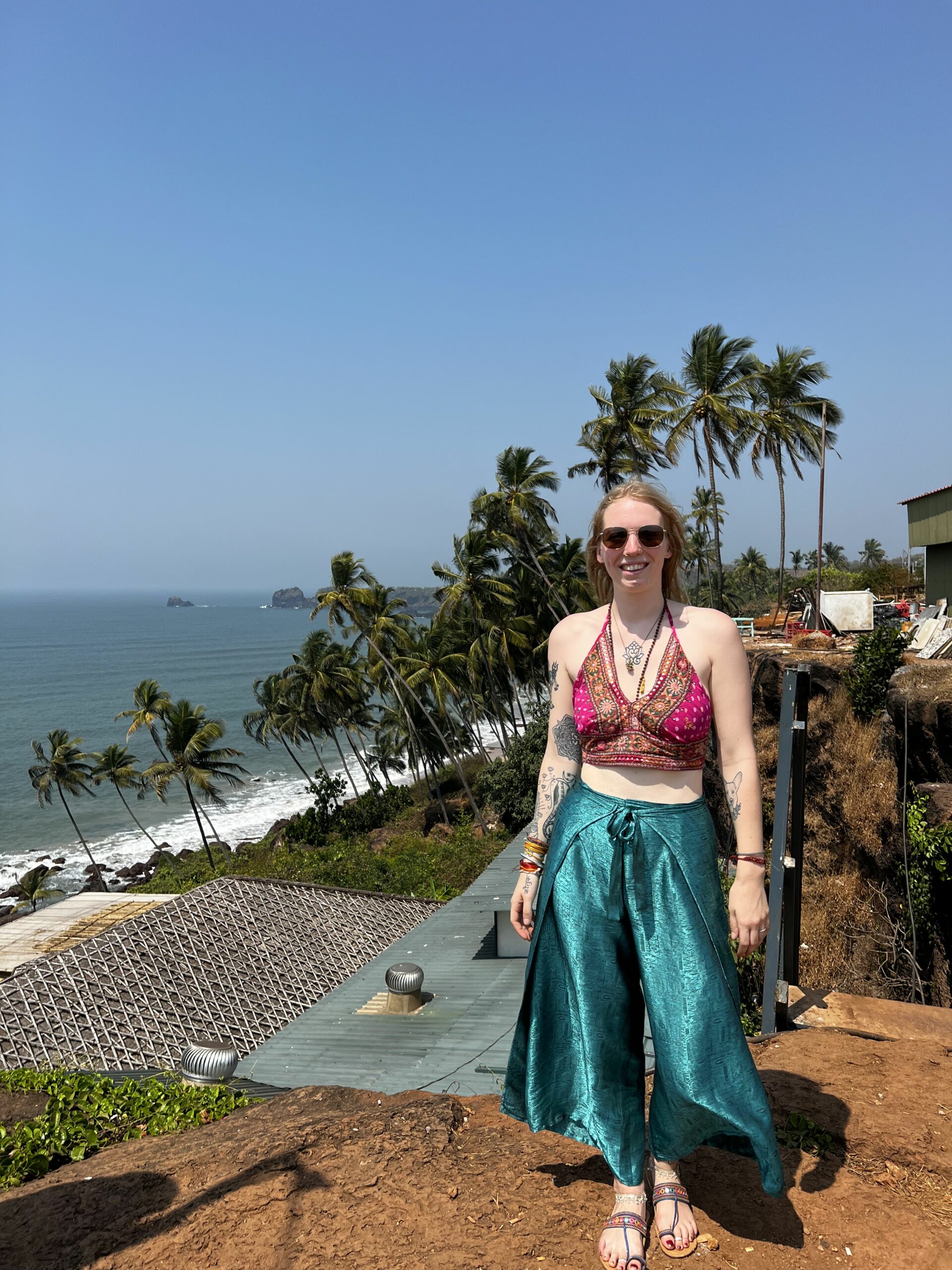
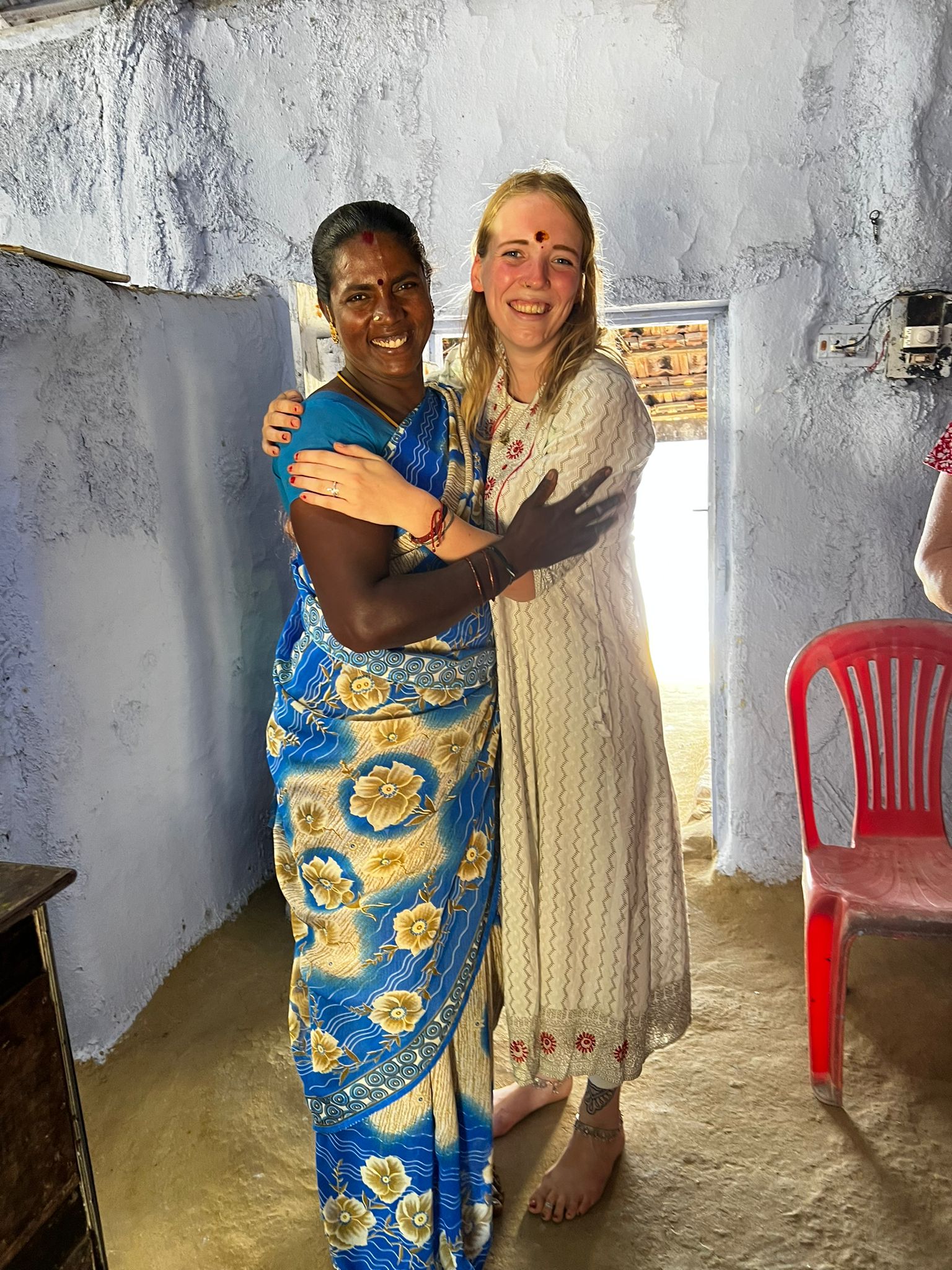
Clothes that you can wear:
- Long flowy pants
- Long skirts
- Shirts with sleeves
- Long dresses with sleeves
Clothes to avoid:
- Crop tops
- Tops which reveal cleavage
- V-neck shirts/tops
- Shorts
- Short skirts
- Very tight leggings or tops
A note on Bikinis in India: if you go swimming somewhere, it depends on the location whether it’s all right to wear a bikini. Most Indian girls don’t wear a bikini, but a shirt with some sort of shorts and go swimming like that.
In my experience, in Goa, you can definitely wear a bikini on the beach or even when you’re just walking around the markets. But when I was in Rishikesh and went swimming in my bikini in the Ganges, I noticed men were staring a lot and wanted to get close to secretly take photos of me. It’s best to judge for yourself by looking at the location and general vibe of the place, or if you see other women doing it. If you really want to swim but the location doesn’t feel right to do it in a bikini, just wear a T-shirt and shorts.
Another thing on bikinis – it’s best to avoid wearing thong bikinis or the triangle ones that are a bit more revealing. That goes for most places in India, as you’ll probably get more attention than you’d want.
A Word on Selfies
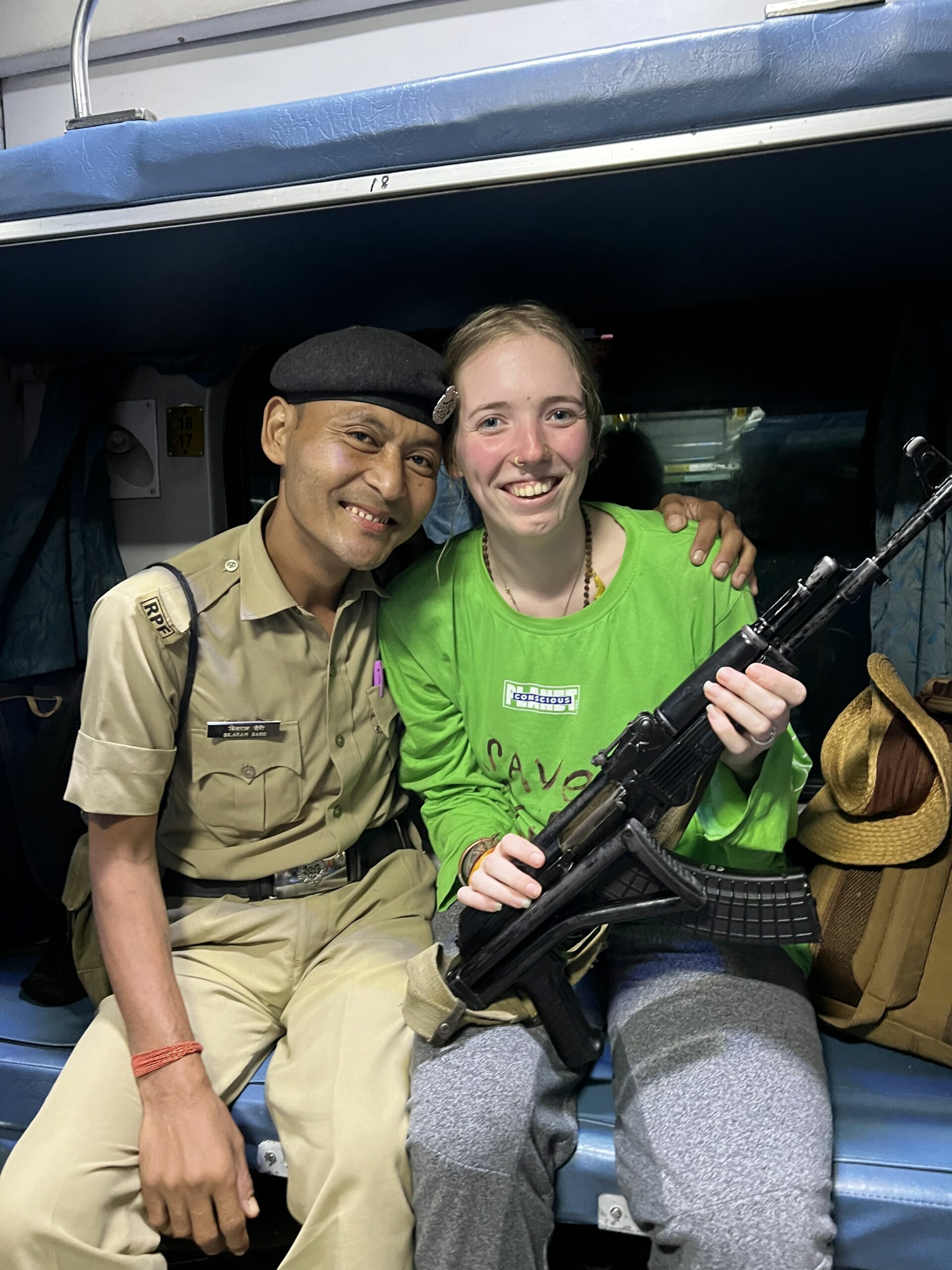
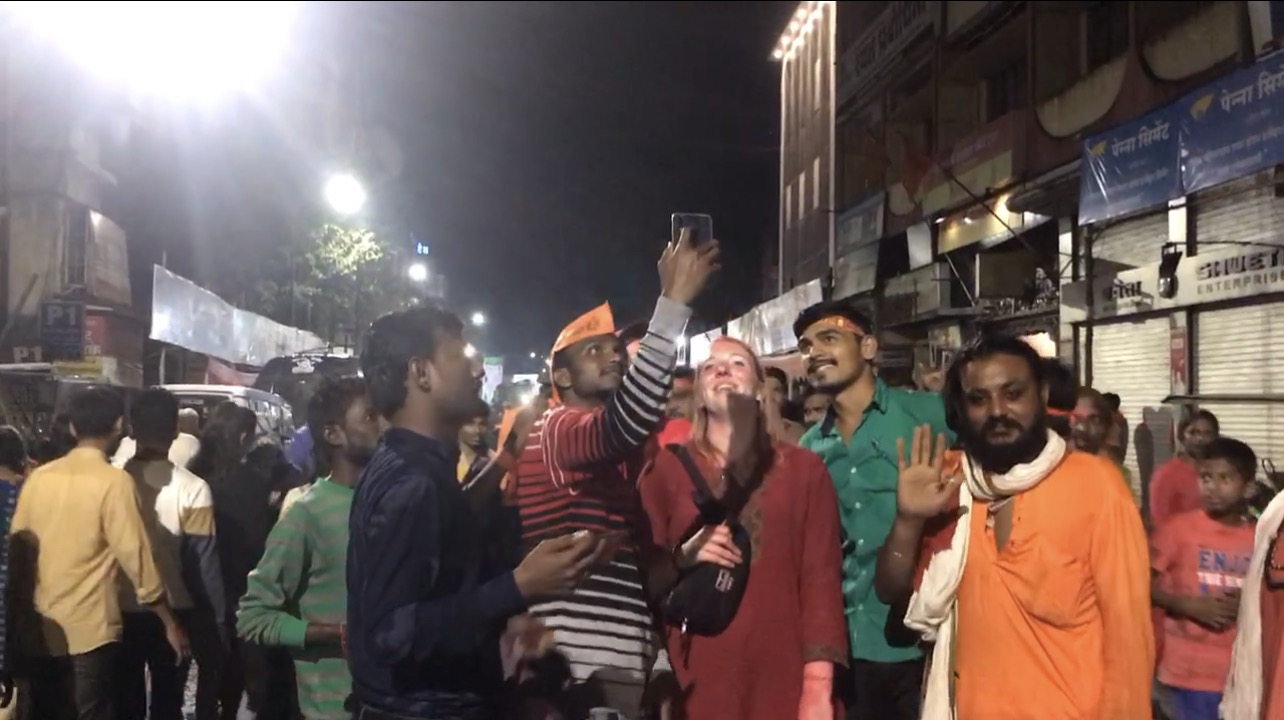
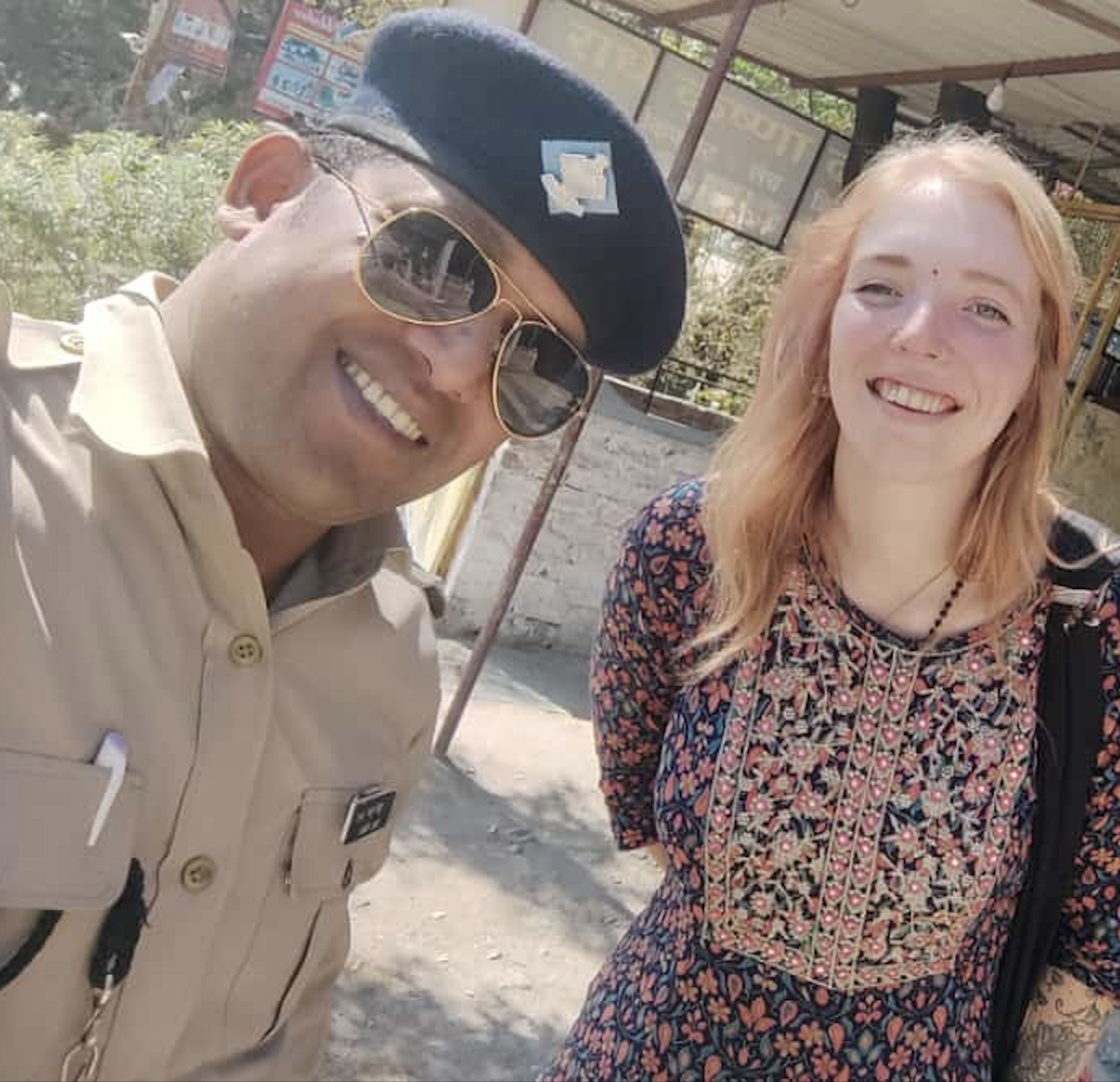
You will get asked multiple times to take a selfie in India as a foreigner. You can accept if you wish and you feel comfortable doing so, but we recommend that in most situations you say no for a couple of reasons shared below.
I know it’s very flattering, and you might feel like a famous celebrity, but to be on the safer side it’s better to avoid doing so. Personally, I used to say yes to everyone asking me for a selfie, but there would be men who would get too close while doing so, or even wrap their arm around me without consent.
It’s not just the ordinary civilians asking for a selfie, either, as I’ve had multiple times that policemen would come up to ask for one. In train from Delhi to Guwahati, a police officer came up to me to have a bit of small talk, and he proceeded by asking for a photo. As he was a police officer, I didn’t see the risk and agreed. He takes this as a sign to puts his gun in my hands, ask someone to take a photo with my phone (as I had a better camera than him), and wrap his arm around me. I felt quite uncomfortable, but as it was a police officer, I decided not to say anything and let it go. When the first picture was done, he asked for another one and this time, he kissed me on the cheek. That was absolutely not okay, of course, but again, I had no idea what to do as it’s a government official and I didn’t want to get into trouble, so I decided to ignore it.
These are just few of the many cases I’ve been asked for selfies and felt uncomfortable during the experience. If a police officer or someone in a position of power asks for a photo, just say NO. They might act irritated for a moment, but that’s about it. Saying yes to a selfie gives them an opportunity to get close to you, and the ones with bad intentions see it as a free pass to do anything they feel like. I strongly recommend not to take selfies with anyone during your time travelling solo in India, especially men.
Interesting to note: in India, being fair is considered beautiful. The more fair someone is, the prettier they are according to Indian beauty standards. Some locals even use brightening creams to make their complexion fairer than it already is.
Medical Care & Pharmacies for Travelers in India
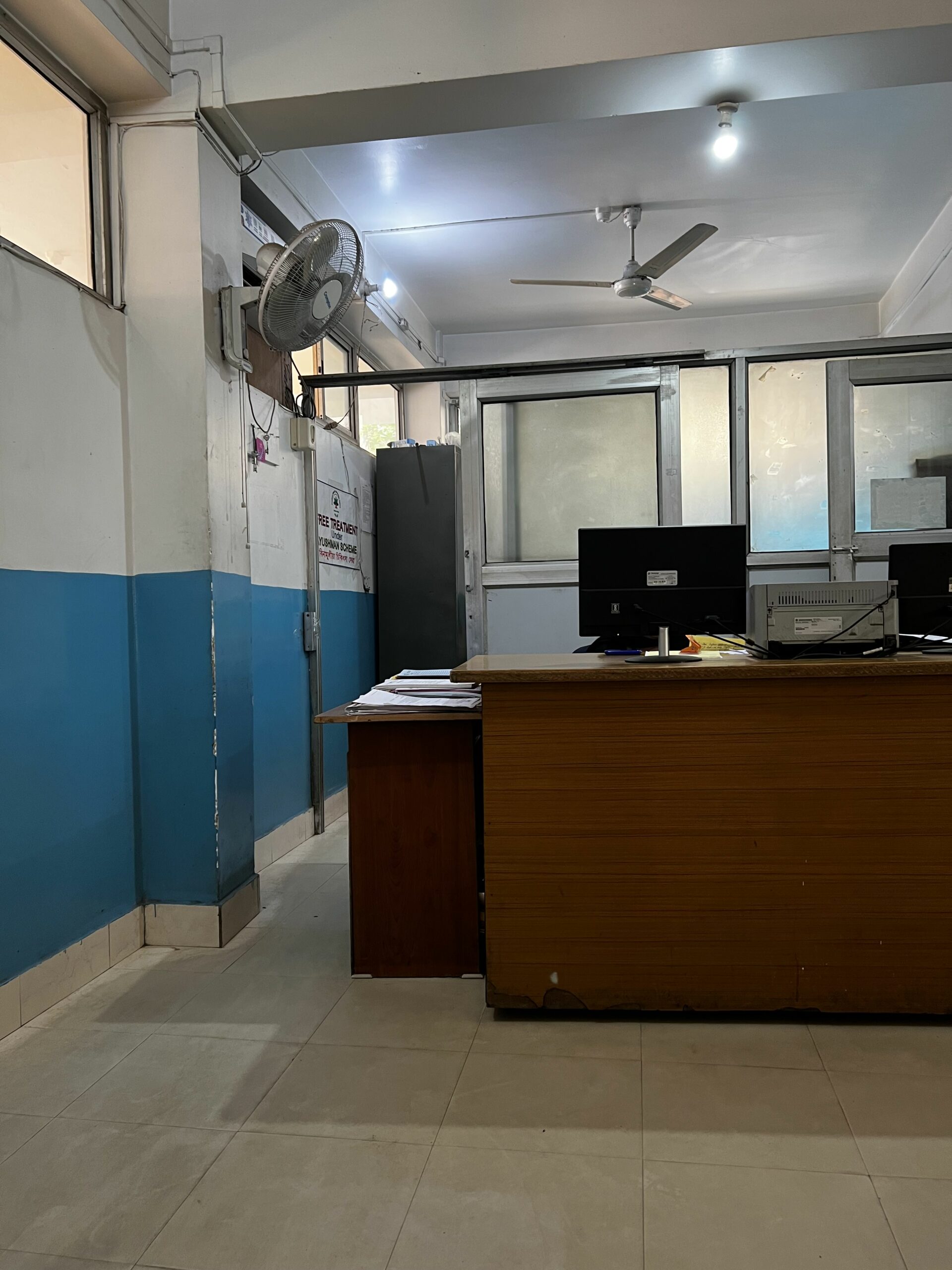
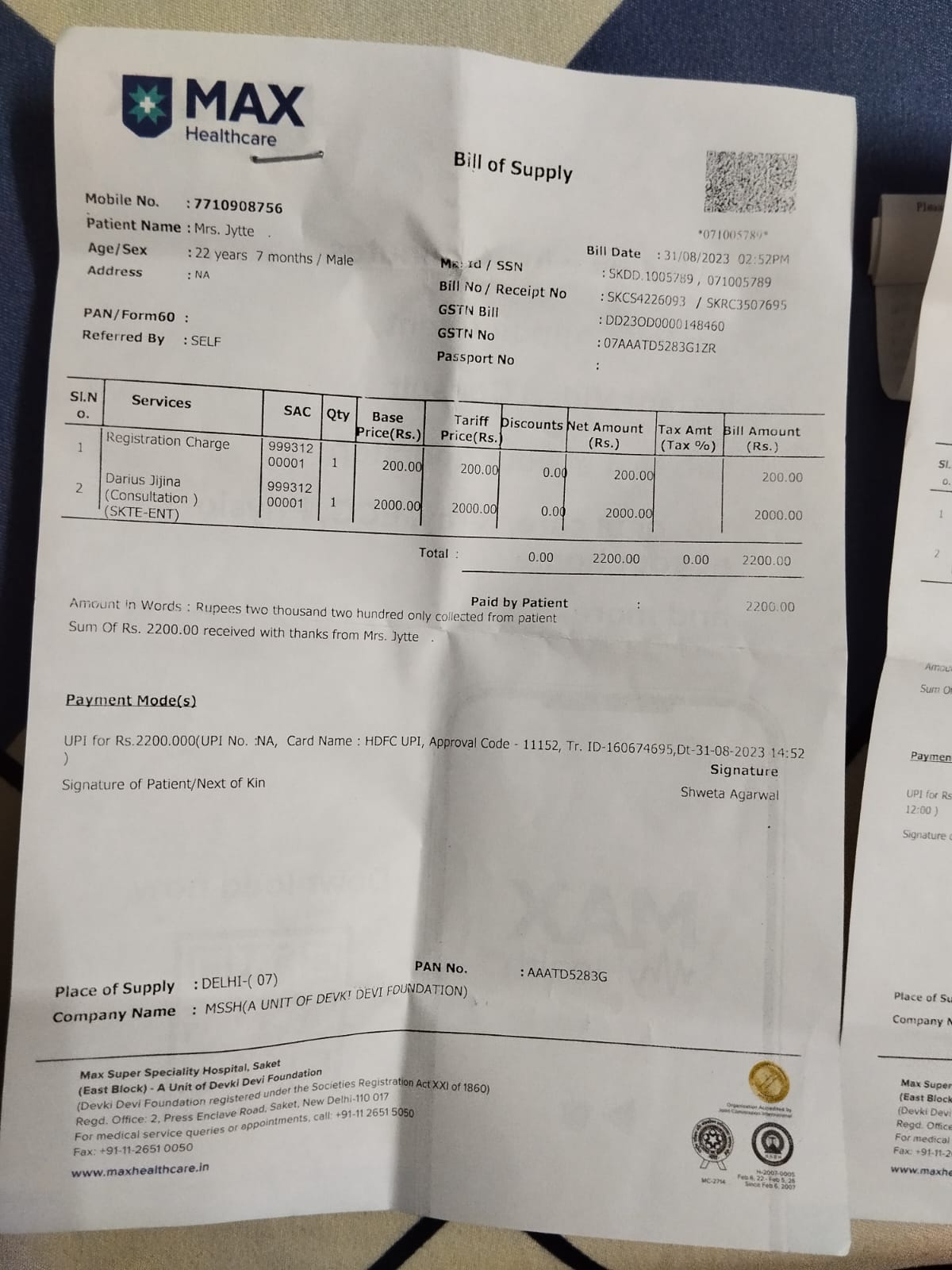
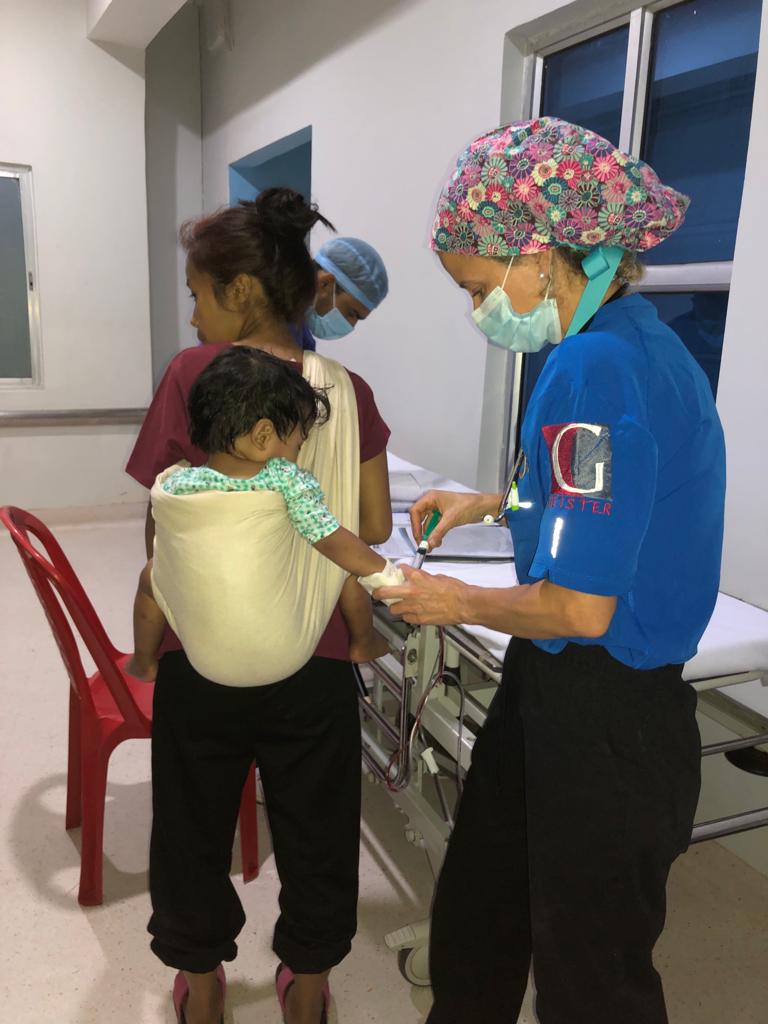
India’s medical care varies in quality and accessibility across different regions. In the urban areas and major cities, the standard of medical care is usually excellent and meets international standards. India ranks fifth on the list of top countries for cancer treatment in the world. Private hospitals and clinics offer advances treatments and highly-skilled doctors. However, in the more rural or remote areas, healthcare facilities can be more limited and of lower quality.
I met Francis (third photo) when I was in Rishikesh. She’s a doctor from Spain, and went to Manipur to teach the doctors there about improving the quality of healthcare available locally. She informed me that the healthcare there was very basic, as it was a relatively-remote area with limited access to the right medications and treatments.
When I went to the Northeast of India – specifically Guwahati in Assam – I had two infected blisters on my toes. I thought it would be good to get them checked, as they weren’t healing on time. This area is remote, and it was hard to find a hospital that meets international standards. I eventually ended up in a government hospital, which seemed fine for the kind of care I required. If it was something more serious, however, I would probably have to go to a bigger city. I paid around INR 200 ($2.40) for the check up and draping of my blisters. After four days, I came back to get the bandages changed and they charged me INR 40 ($0.48) for the same.
The cost of medical care varies. Government hospitals are often very cheap, though they often fail to meet international standards. As a foreigner, you’d be better off sticking to private hospitals and clinics, as the quality of healthcare is better in those facilities.
I’ve also gone for a check-up with an ENT doctor at MAX Super Specialty Hospital – one of Delhi’s best hospitals – and paid INR 2,000 ($24.02) for the consultation. For specialised treatments, this would be much higher and it’s advisable to have comprehensive travel insurance with medical coverage of most kinds.
Access to pharmacies is good and they’re usually well-stocked with the medicines you may require. Pharmacists in India have to complete a course of three years before they can legally be a chemist. In urban areas, pharmacies are abundant and carry a wide range of medications. Availability might be limited in the more remote areas, though I’ve never experienced that I wasn’t able to get the medication I needed. For woman who are on birth-control pills, it’s good to take enough of them with you before you travel, as it’s almost impossible to get these pills in India even with prescription.
While most general medications are accessible, there might be variations in brands or formulations compared to what you might be used to in your home country. I advise to go to the pharmacy and tell them what you’re looking for, and then use to internet to check if it’s the same medication produce by a different brand, or something else entirely.
How To Eat Healthy While On The Move in India
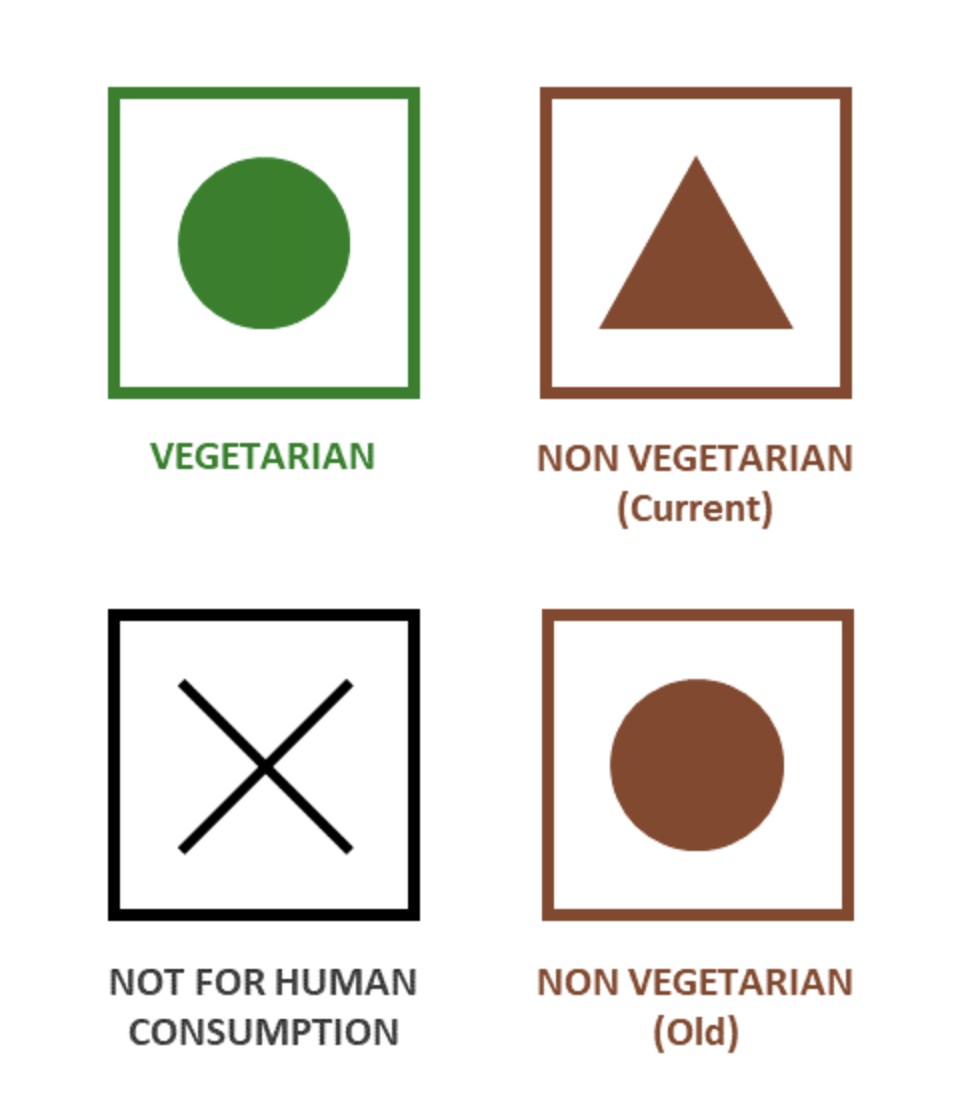
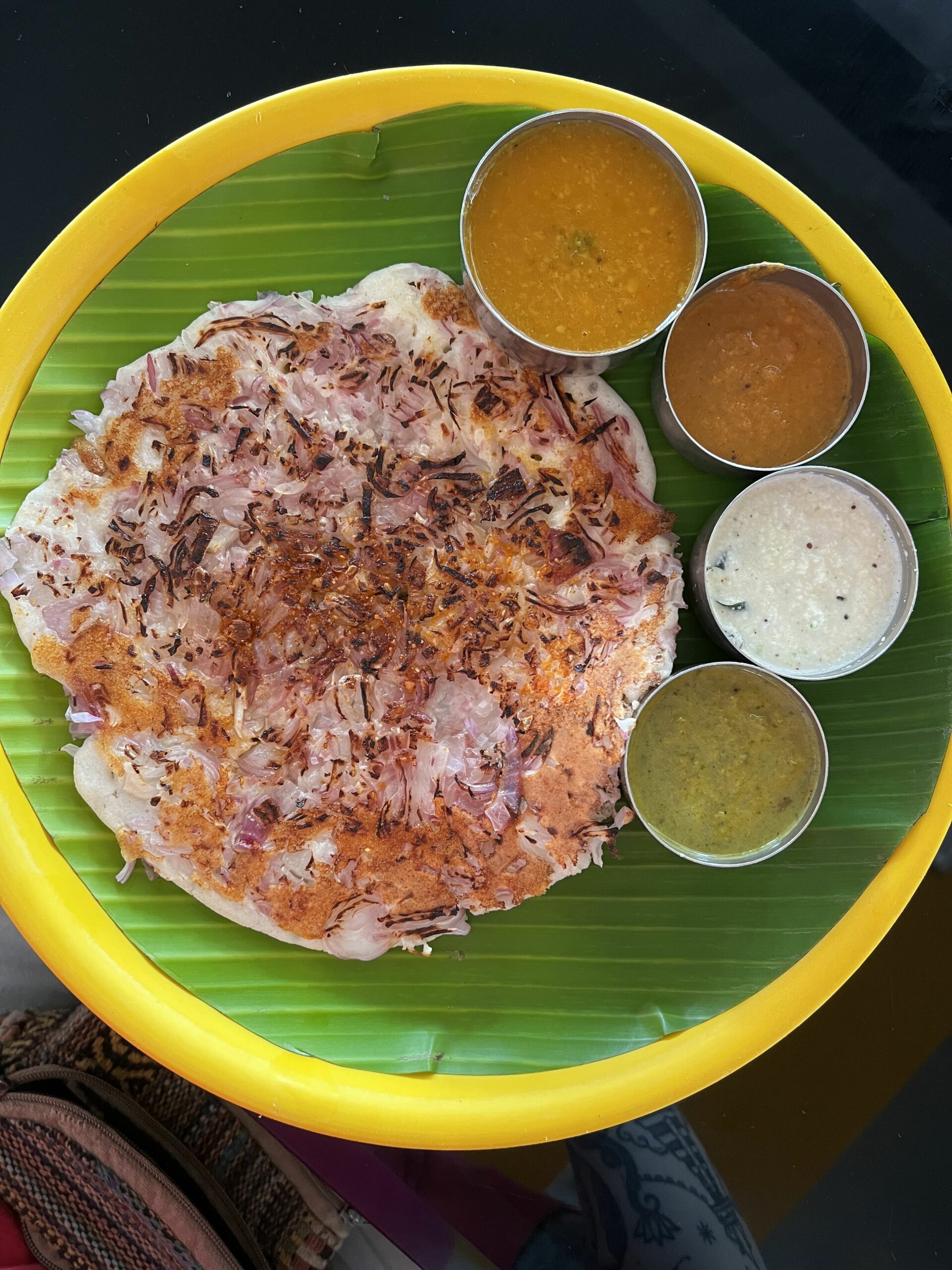
Of course, you want to avoid using medical facilities when travelling, so it’s even more important to eat healthy while you’re travelling in India. Thankfully, Indian cuisine is considered one of the healthiest in the world. However, it can still be sometimes heavy on oils and fats, so do clearly tell the restaurant if you rather have a bit less of that.
Choose grilled or tandoori dishes (cooked in a clay oven). These are often a healthier choice compared to the fried items like Samosa or Poori. You’d find many street vendors grilling on the street and cheap restaurants offering options cooked in a tandoor.
If you’re vegetarian, you’d surely love India. Around 37% of the total population claims to be vegetarian, and you’d often find symbols indicating ‘pure vegetarian’ on restaurants in most towns and cities across the country. Do note that in India, eggs are considered to be non-vegetarian, unlike most western countries.
Being vegan, however, isn’t as common as vegetarianism, though it’s still possible to get your hands on vegan food if you so choose. There are may vegan cafes in the bigger cities, and dishes like dal (lentils), sabji (vegetable curries, and roti (bread) are staple vegan foods you can go for. However, some restaurants use butter or ghee (clarified butter) while cooking, so it’s important to communicate that you’re vegan and that you don’t want them in your food.
In most restaurants, there’s a clear separation between vegetarian and non-vegetarian cooking. Even in non-vegetarian restaurants, it’s common practice to keep the pans used for meat separate from the ones used for vegetarian dishes. Still, if you’re vegetarian, it might be better to go to one of many veg-only restaurant.
Cultural Do’s & Don’t For Women in India
There are certain things that might be normal back home, but are considered strange in India, especially as a woman. For example, while you probably can wear anything back home, here, it’s important to dress up a bit more conservatively.
Smoking as a woman is often looked down upon, and doing so can draw even more attention than you’d already get being a foreign woman. Try to avoid doing this especially in public places if you can.
Here are some basic do’s and don’t:
- Do dress up appropriately – cover your chest, shoulders and legs.
- Don’t wear revealing clothes such as crop tops, shorts and small tops.
- Do stand straight and confident.
- Don’t go out after dark alone.
- Do tell people that you’re married. It helps keep unwanted attention at bay.
- Don’t be too nice and smile at everyone, especially men.
- Do stand in the woman lane at security checkpoints at malls, metro stations, etc.
Being a woman in India does come with some rules you need to follow to ensure your safety. You should really stand your ground and have an attitude that radiates a ‘don’t f*ck with me’ vibe. When I first came to the country, I was unaware of how important that was, and I tried to be nice to everyone, talk to everyone, and smiled at anyone.
Doing that made people – mostly men – think that I was okay with the way they used to treat me or talk to me. It got better once I changed that and didn’t smile back anymore, started ignoring people, and wasn’t as polite and nice to everyone. This applies mainly when you’re walking on the streets or through crowded areas.
Travel & Safety Concerns The Solo Female Traveler

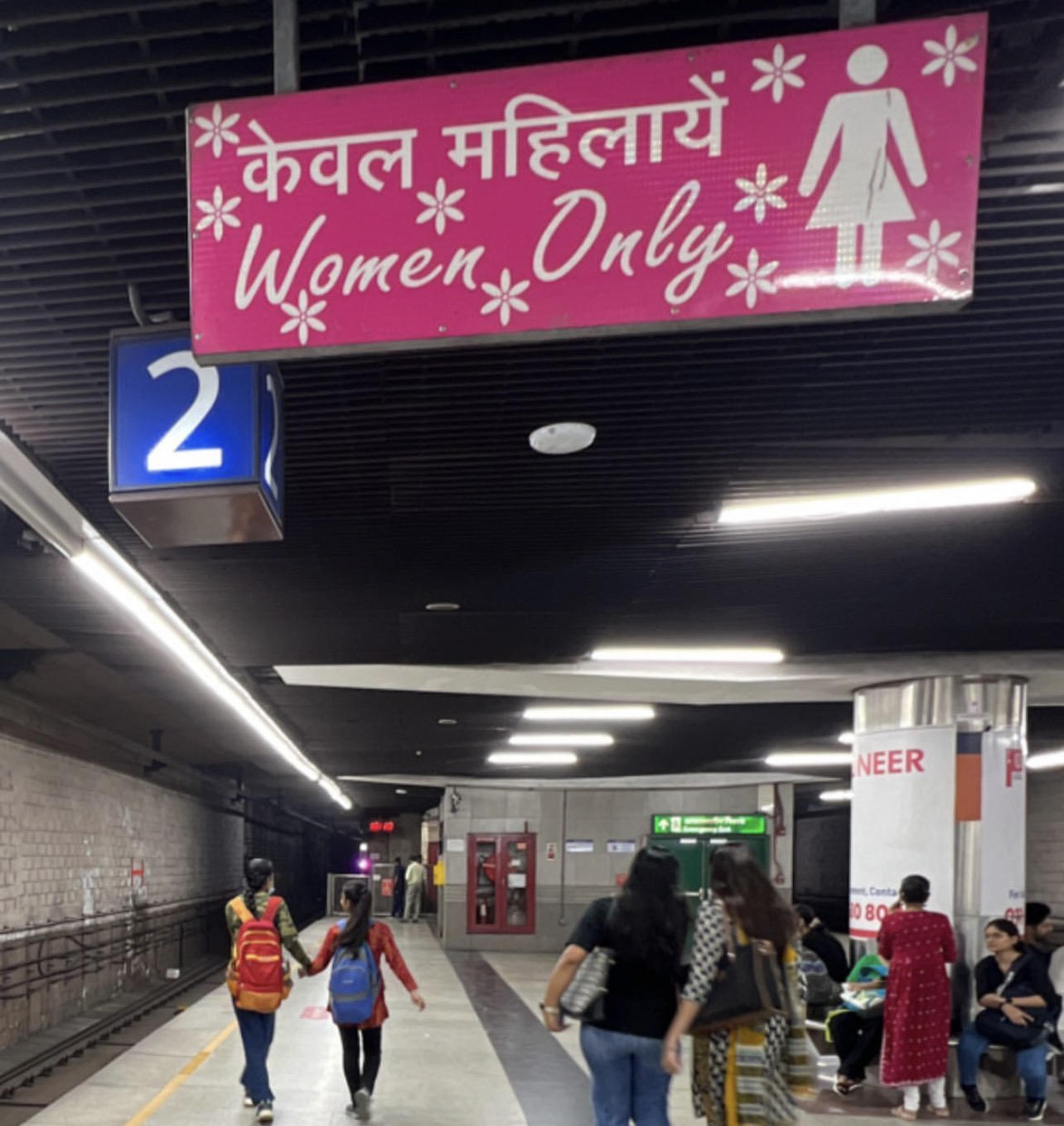
It’s important to stay safe when travelling around, and this does ask for some extra precautions as a solo women traveller. One of the golden rules is to always try and avoid travelling in the dark.
Here are some ways that can make your journey even more safe and secure in India:
- On most train stations, you’d find a specific waiting room for only women. Use these.
- It’s best to use these waiting rooms whenever they’re available. If not, I’d recommend looking for other women on the platform and sit near them, or families. In my personal experience, they seem to look out for me, and even helped me whenever I needed.
- If you’re travelling alone on the trains, opt for 2AC class
- It’s generally a bit safer and less crowded than the others (though 3AC should be fine as well). I mainly stick to 2AC whenever I travel around.
- They ask for your gender while you’re booking train tickets. The reason is that if there’s a woman in the compartment, they make sure to put another woman in the same compartment for added security. This way it’s very unlikely that you’d end up with only men in the compartment you’d be spending at least a few hours in.
- On buses choose the seats with a pink or red outline. These are reserved for women, and only another woman can book the bed/seat next to it
- Most bus operators also offer live tracking, which can be shared with your friends and loved ones to keep an eye on your movement during the trip. When choosing your pick-up point, I’d recommend checking the locations and seeing whether the bus station is in the middle of nowhere, or if it’s in a busy area with shops and everything around.
- If there’s an option to go to the main tour operator’s office to get picked up from there, always opt for that as they often have comfortable waiting rooms.
- In local busses, metros, and trains, some seats and compartments are reserved for women. If they’re occupied by men, women can ask for it and they’re required to vacate it. Women-only seats are clearly marked by signs, so they shouldn’t be too hard to find. Fun fact – local buses in Delhi are free of cost for woman.
- Metro Lines in India have specific Woman-Only carriages. Use these too.
- These are the carriages on the end or beginning of the platform. You’d easily spot them through the pink woman-only board hanging on the platform. You can use these for added safety too.
Other means of transport that are safe to use and don’t require much explanation:
- Taxi/Uber/Ola (you can always share live tracking with your friends)
- Rickshaws
- Flights
The Best Places for Safer Travel in India
Here’s a list of areas known to be safer, especially for woman:
- Goa
- Rishikesh
- Kerala
- Rajasthan
- Himachal Pradesh
Goa
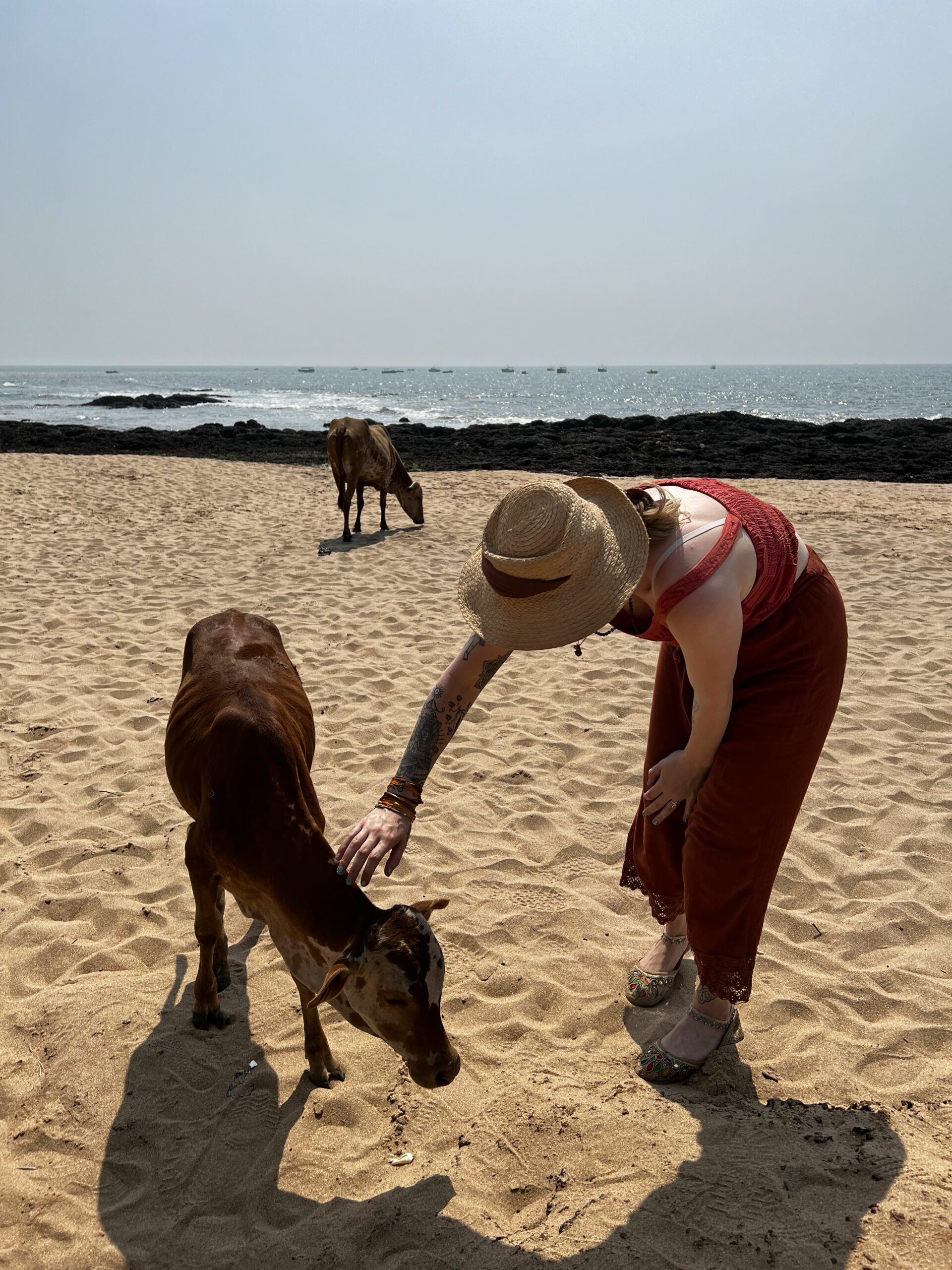
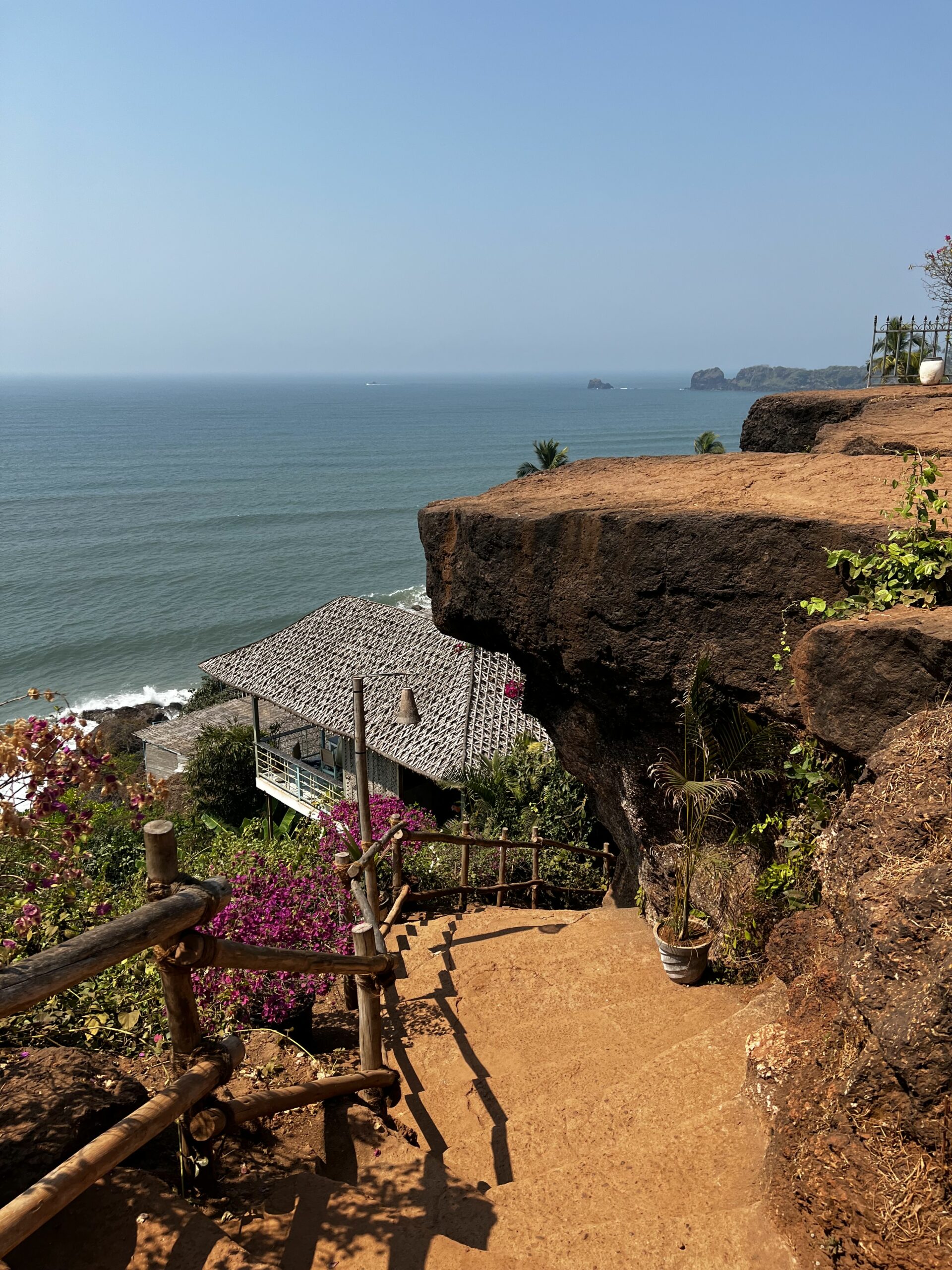
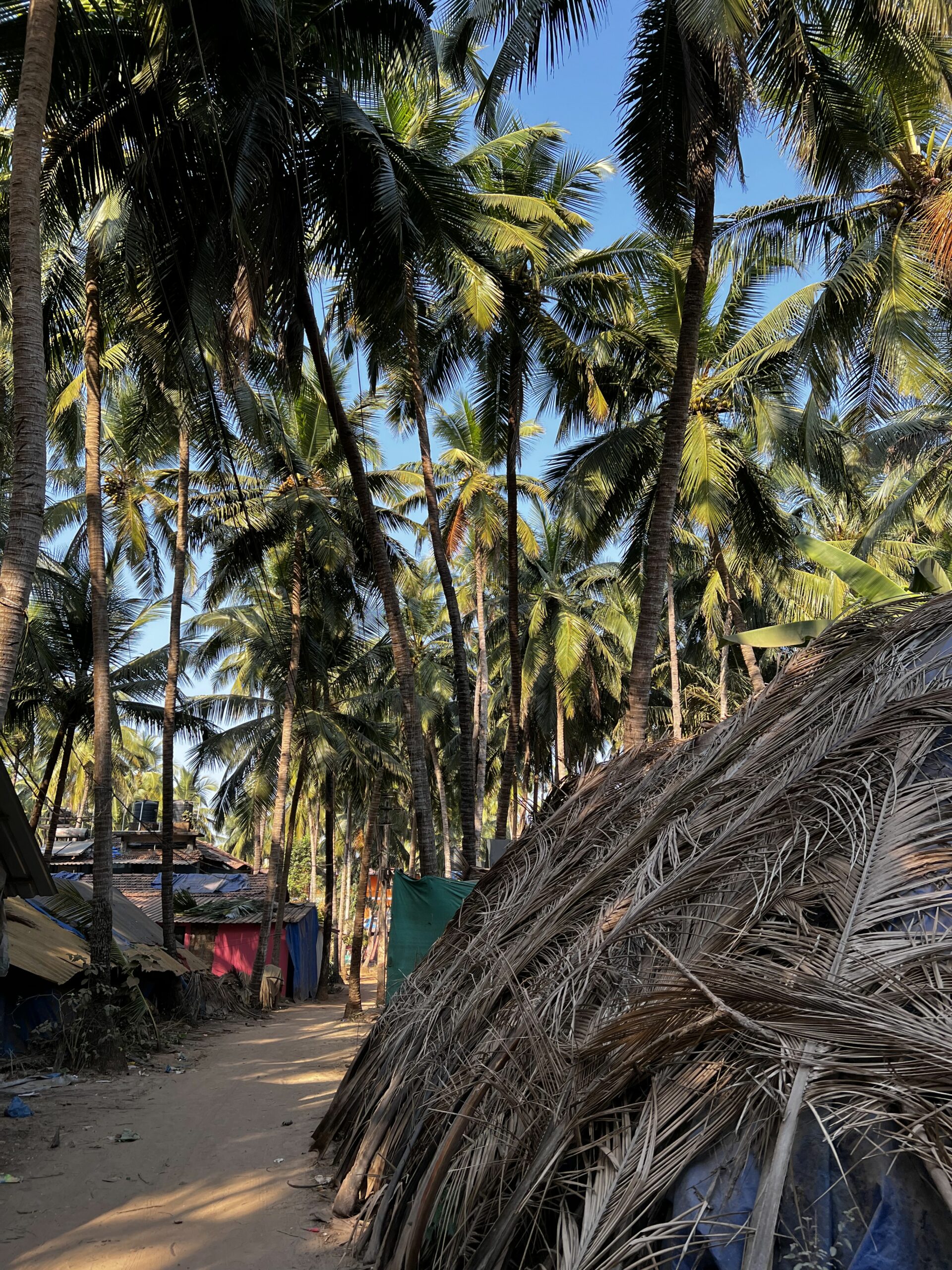
Goa is the most popular destination among foreign travellers, especially solo female travellers, and for good reason. It’s incredibly safe. I’d like to call it the Ibiza of India, as you can enjoy the most beautiful sunsets on the beach, spend your time in gorgeous and cute cafes, swim in a bikini, go street shopping in one of the many hippie flea markets, indulge yourself in one of the many workshops offered, and spot baby turtles and dolphins in the south. Goa has an endless list of things you can do, making it a perfect city in India for that vacation vibe.
I’d highly recommend Goa when you go to India.
Rishikesh
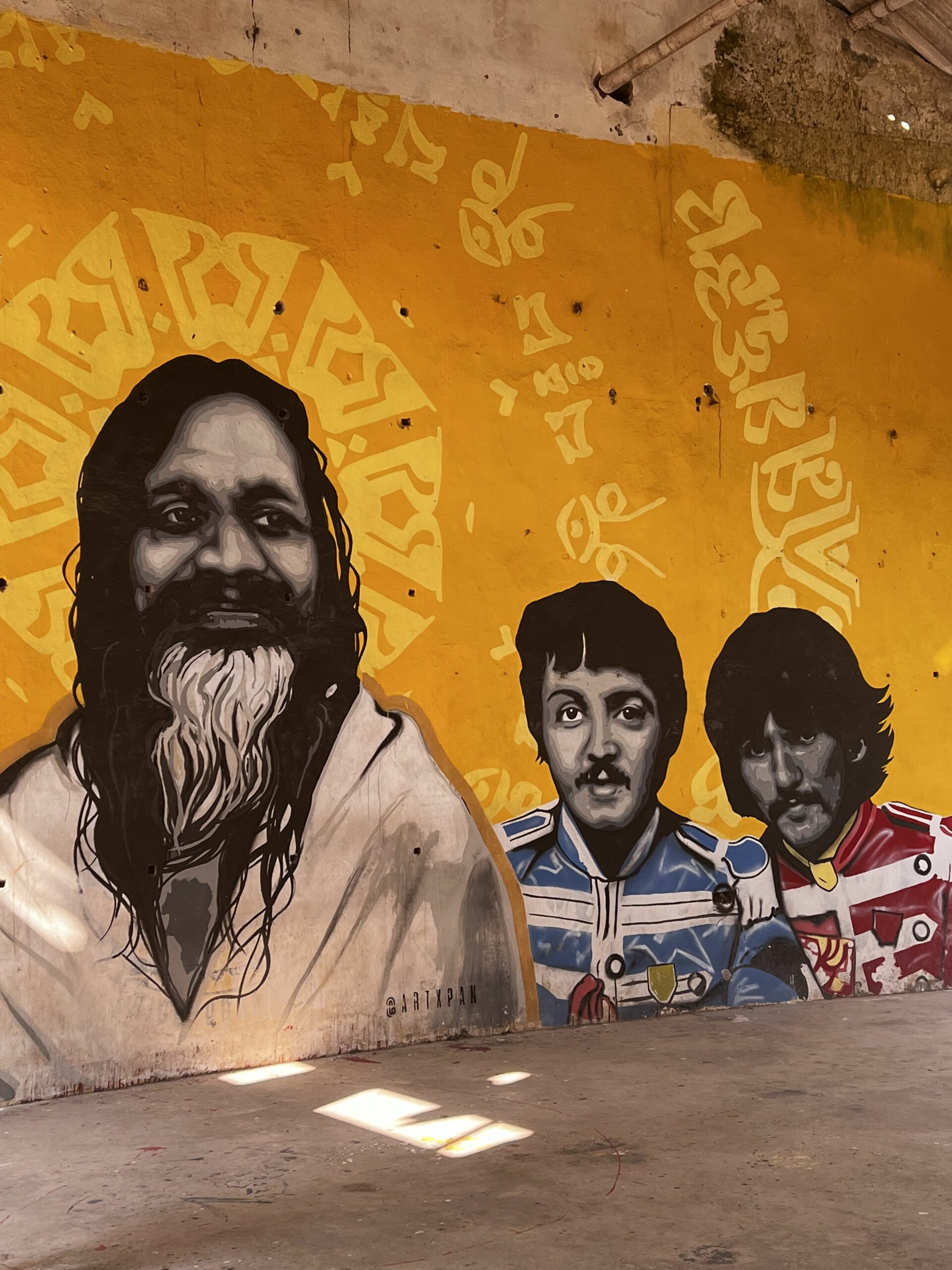
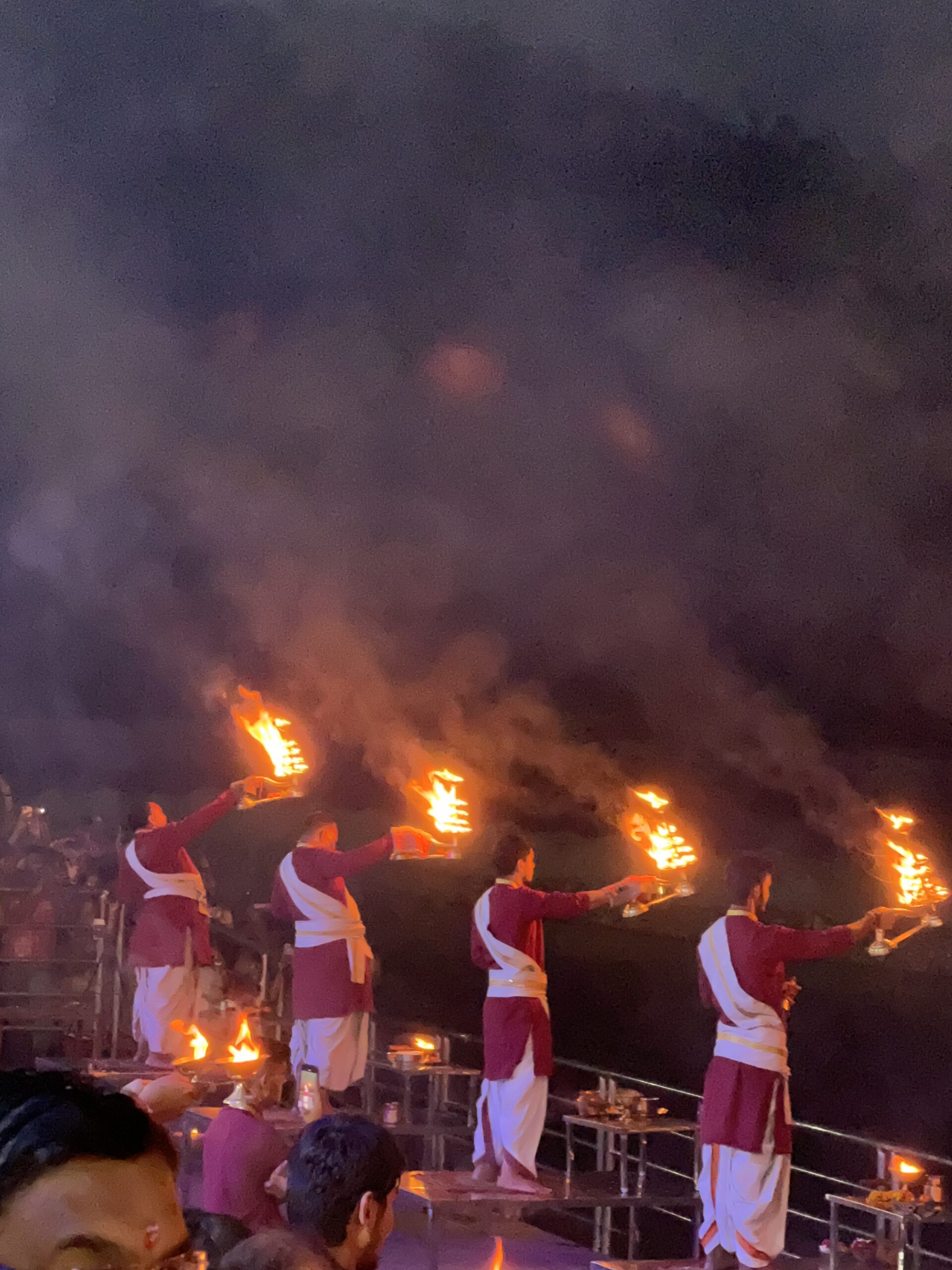
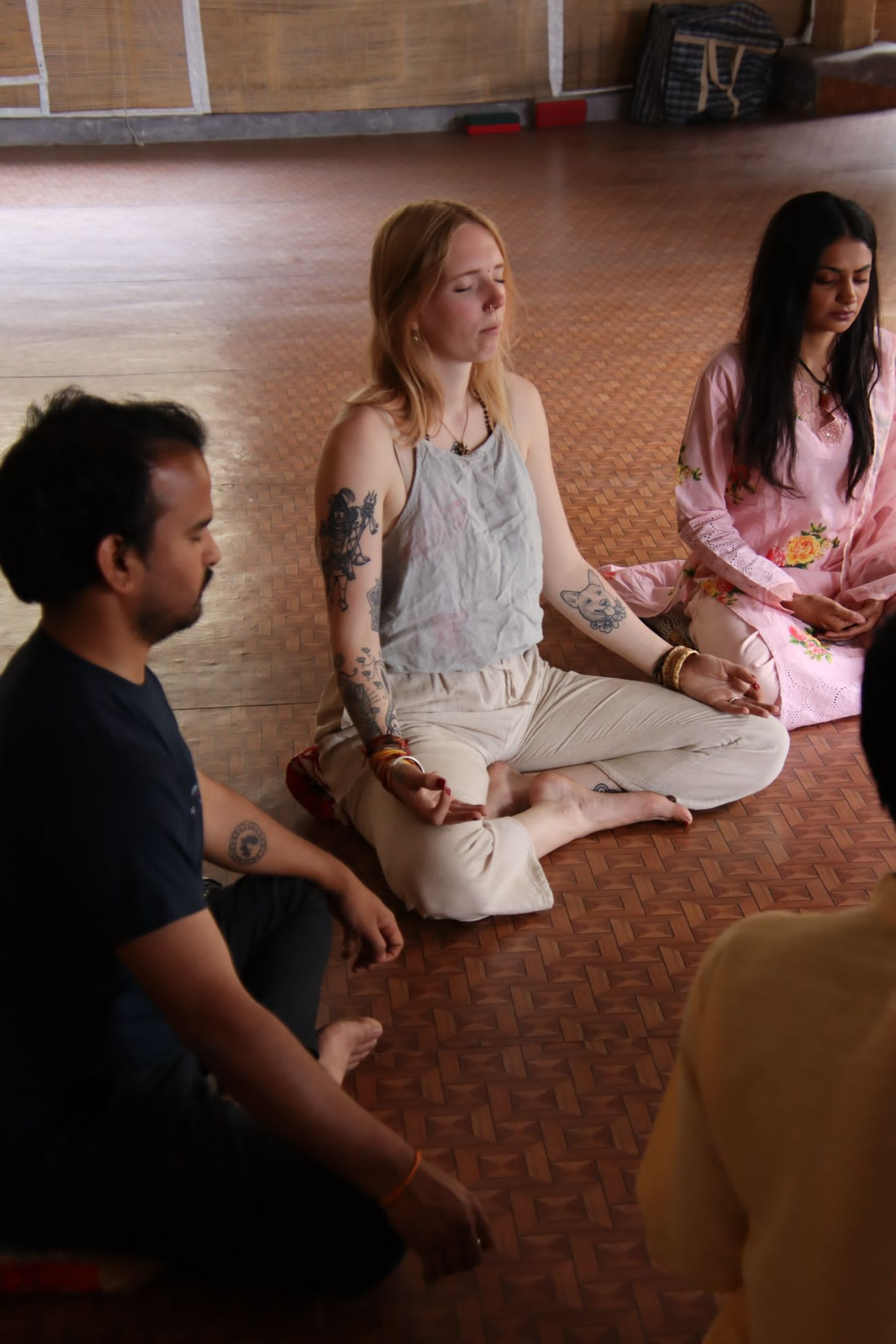
Rishikesh – also known as the Yoga capital of the world – is one of the best places in India if you’re into spirituality and want to indulge yourself in some self-exploration. The holy Ganges river flows through this city, and you can attend the prayer at the banks every evening. There are thousands of Yogshalas (yoga schools) where you can go for yoga drop-in classes. If you want to delve deeper into the world of yoga, you can even do your Yoga Teacher Training here. There are loads of cute cafes and beautiful mountains surrounding the city. Rishikesh is also home to the Beatles Ashram, which the Beatles used to frequent for meditation. It’s decorated with beautiful murals and meditation caves. If you’re not too much into spirituality but prefer a more adventurous vibe, Rishikesh is also famous for river rafting and is home to the highest bungee jumping spot in India.
Kerala
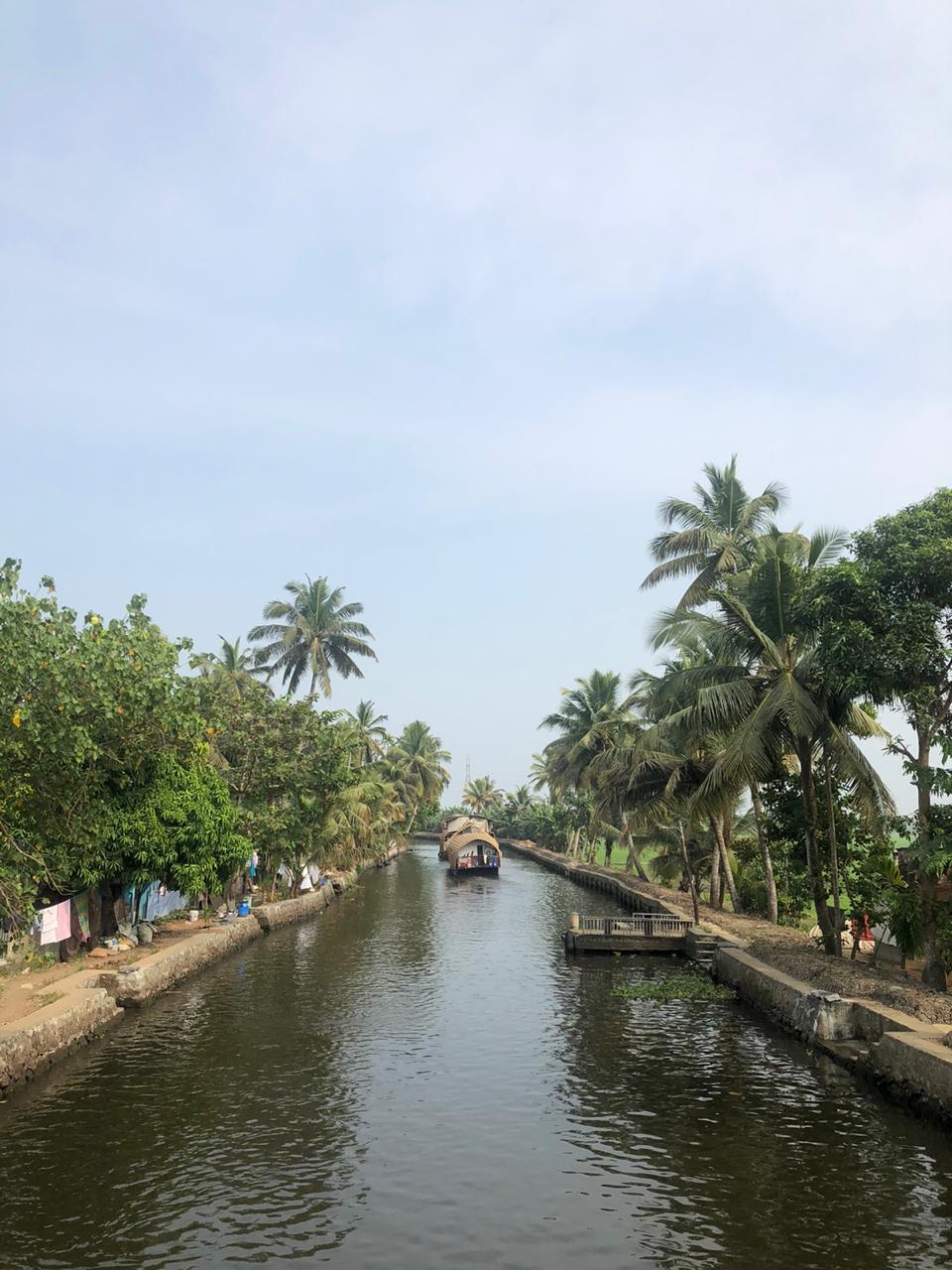
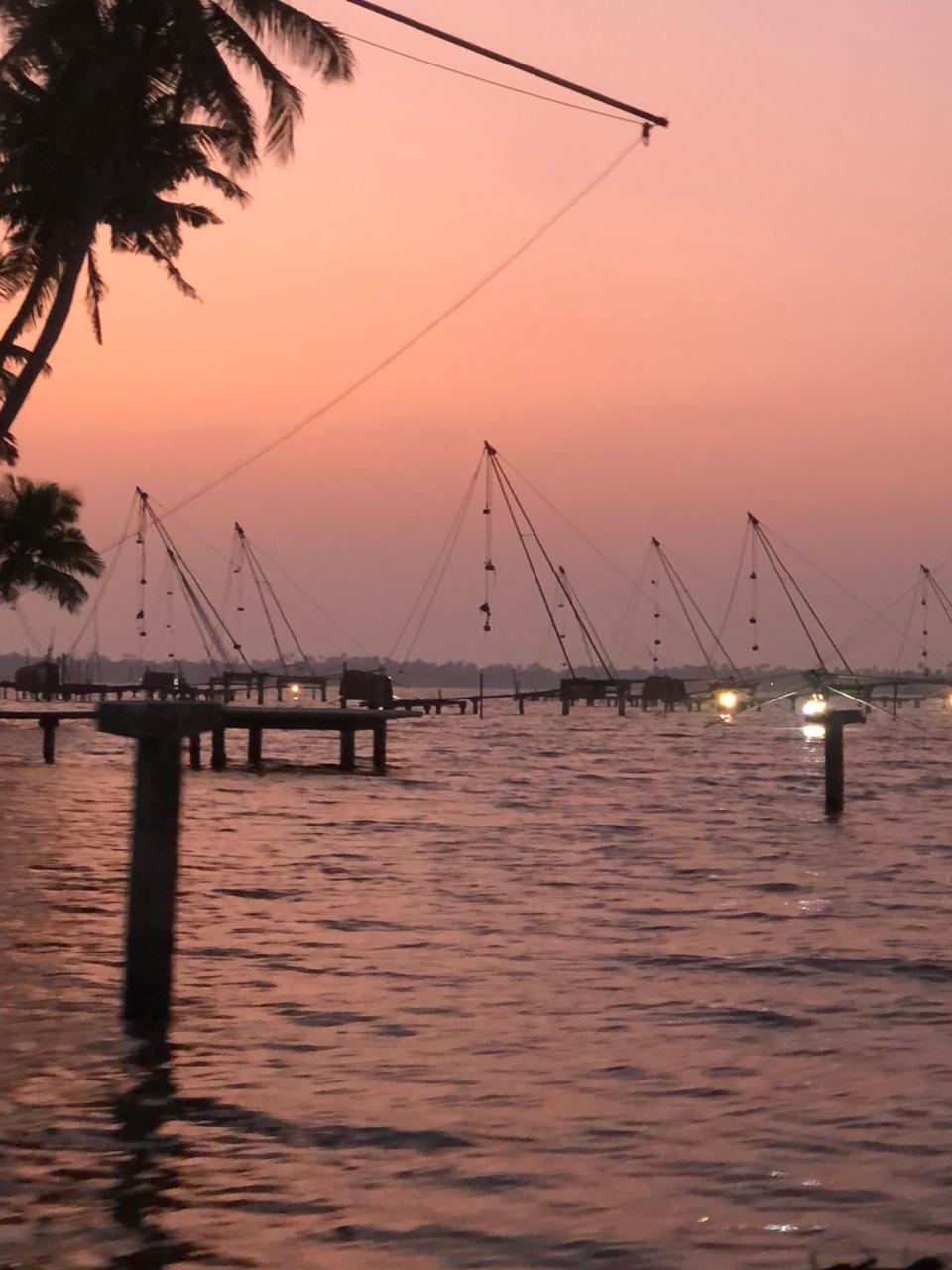
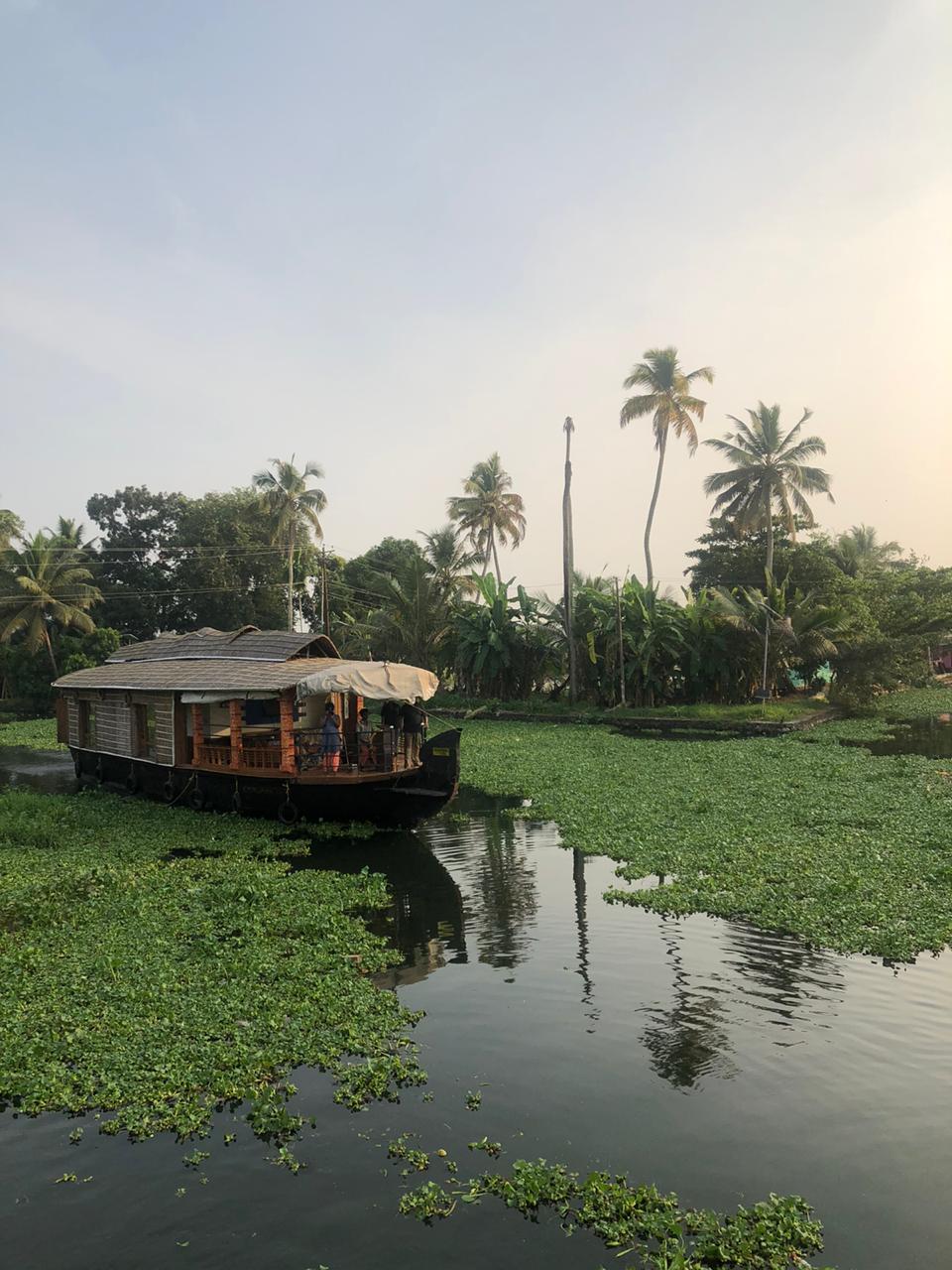
Kerala is located on the southwestern coast and is known for its natural beauty, coffee and tea plantations, diverse landscapes, and many other activities that can only be done here. You can explore its serene backwaters cruising on a houseboat. The cruise goes through the waterways, surrounded by tropical palm trees and traditional fishing villages. This state is also a hub for traditional Ayurvedic treatments and therapies. There are many Ayurveda retreats to detox yourself, or learn more about Ayurveda in general. Kerala culture is also one of a kind, with local dance traditions and performances one can witness.
Rajasthan
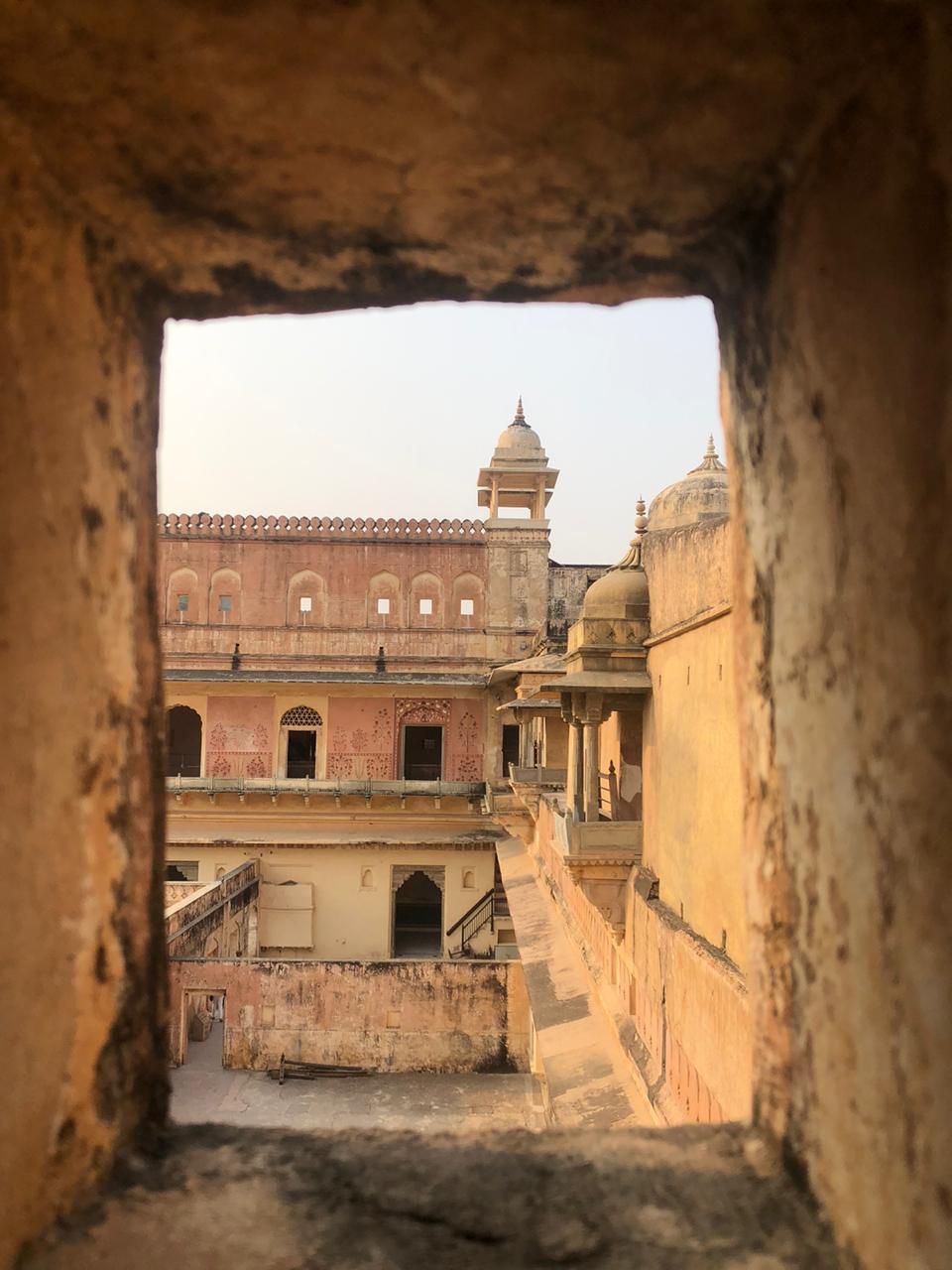

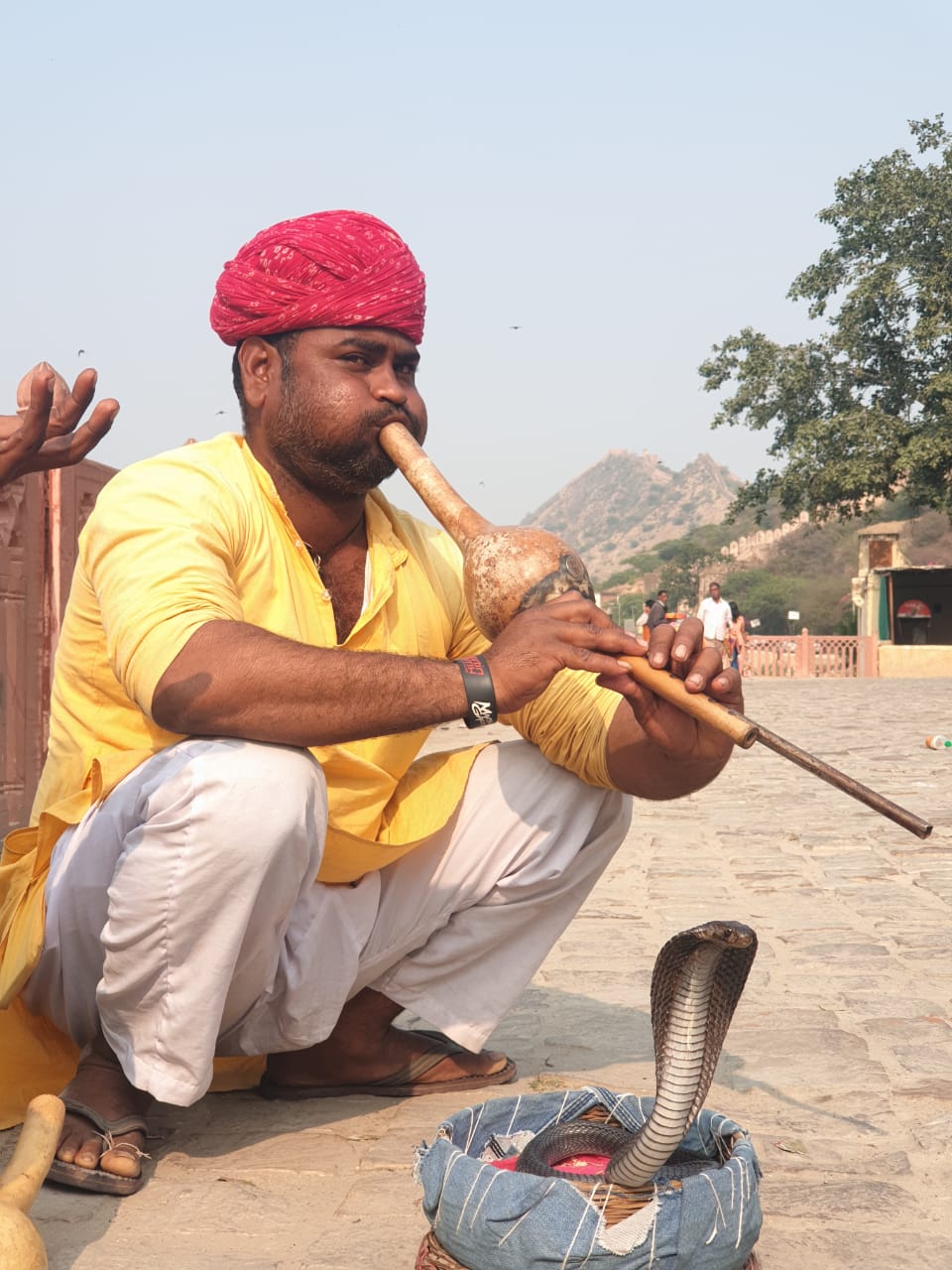
Rajasthan, known as the ‘Land of Kings’ is a state in northwestern India. It’s famous for its rich history, royal architecture, and cultural heritage. There are many forts and palaces to visit, such as the Amber Fort in Jaipur, the Mehrangarh Fort in Jodhpur, and the City Palace in Udaipur. A large part of Rajasthan is covered by the Thar Desert, and you can explore it with camel safaris in the day and camping overnight to witness the star-filled sky. It’s an incredibly-rich state when it comes to tradition and culture, with their own dressing style, music, and dances. There’s so much to see, making you feel like you’ve come to your own version of Agrabah from Aladdin .
Himachal Pradesh
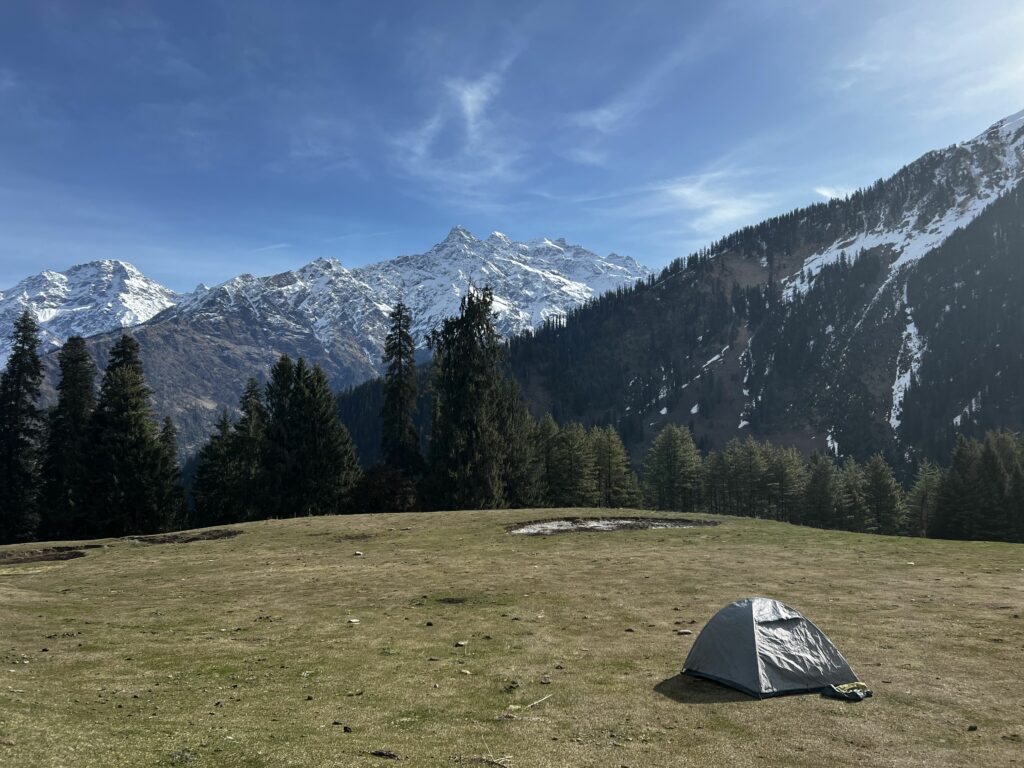
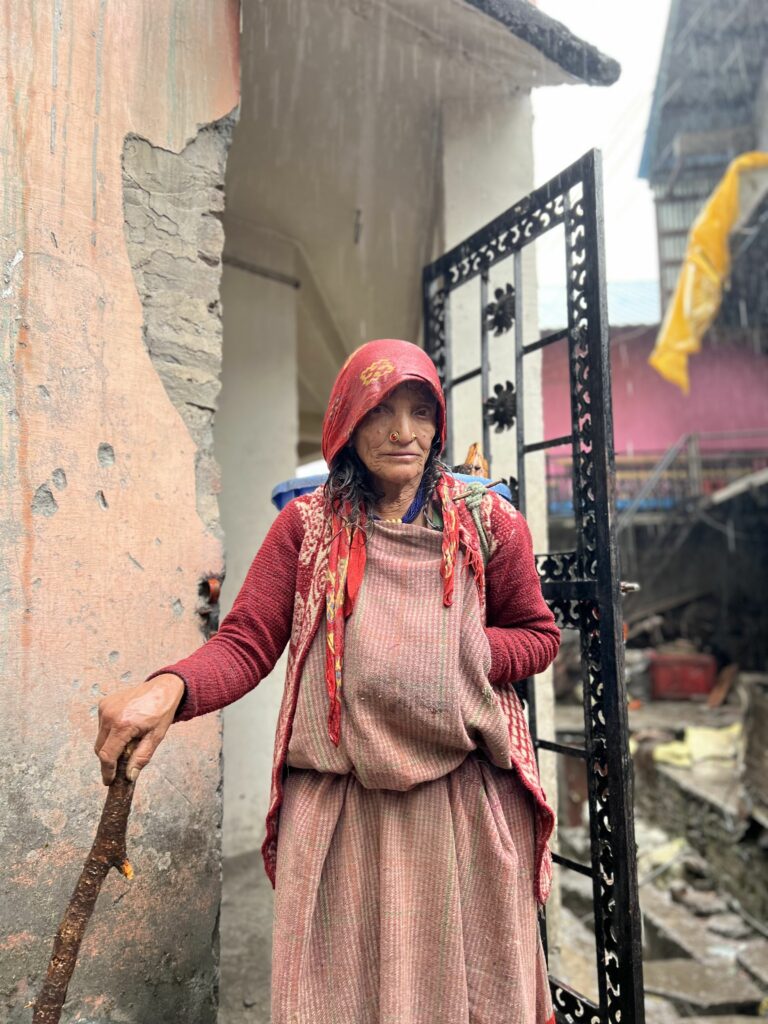
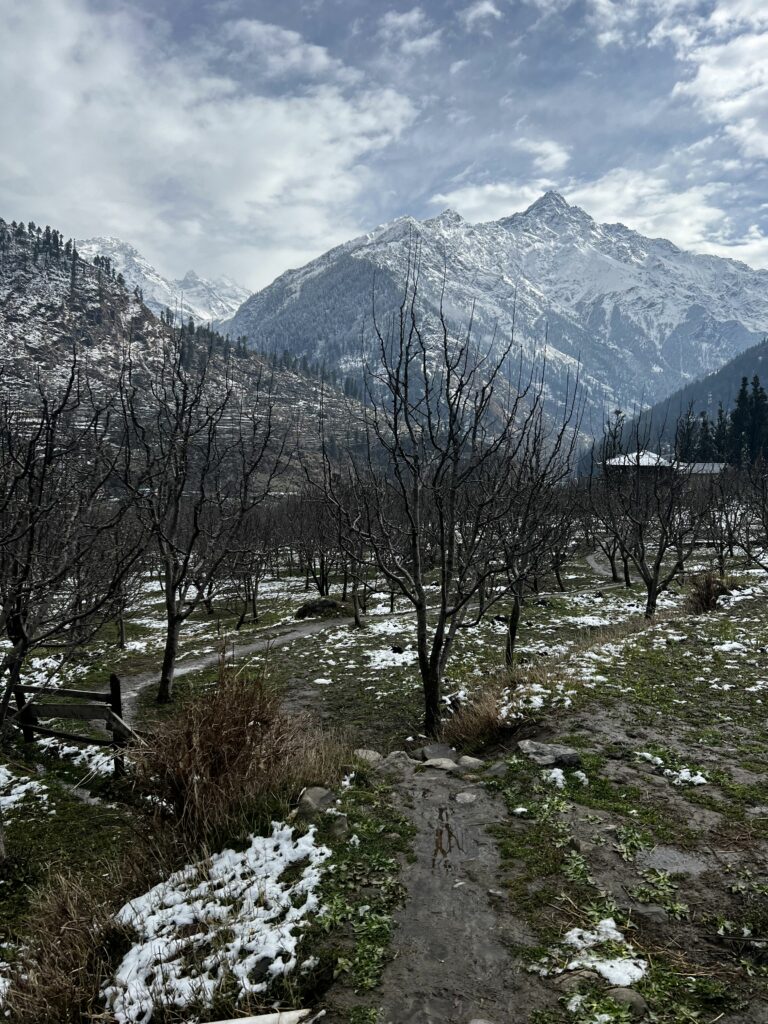
Himachal Pradesh is a state in the western Himalayas, known for its apple orchards, natural hot springs, and beautiful Himalayan treks. Parvati Valley – sometimes named little Israel – is famous for its many Hummus and Pita restaurants, as well as its cannabis fields. There are countless unexplored treks in the region, and if you find a nice group of people to go with, you can even camp surrounded by huge snowcapped mountains. Dharamshala is known for being the exiled home of the Tibetan Dalai Lama and remains a major centre for Tibetan Buddhism. One can find many spiritual retreats here.
Accommodation Security
There are multiple options when it comes to accommodation options. You can stay in dormitories, hotels, guesthouses, or rent your own accommodation. But how safe are all of them, really? In general, it’s very important that you do thorough research into your accommodation, especially in terms of reviews. In Delhi, especially, this is crucial for safety and security. There are many hotels that are fake or unsafe, and it’s important to do your research to avoid sketchy places.
Hostels
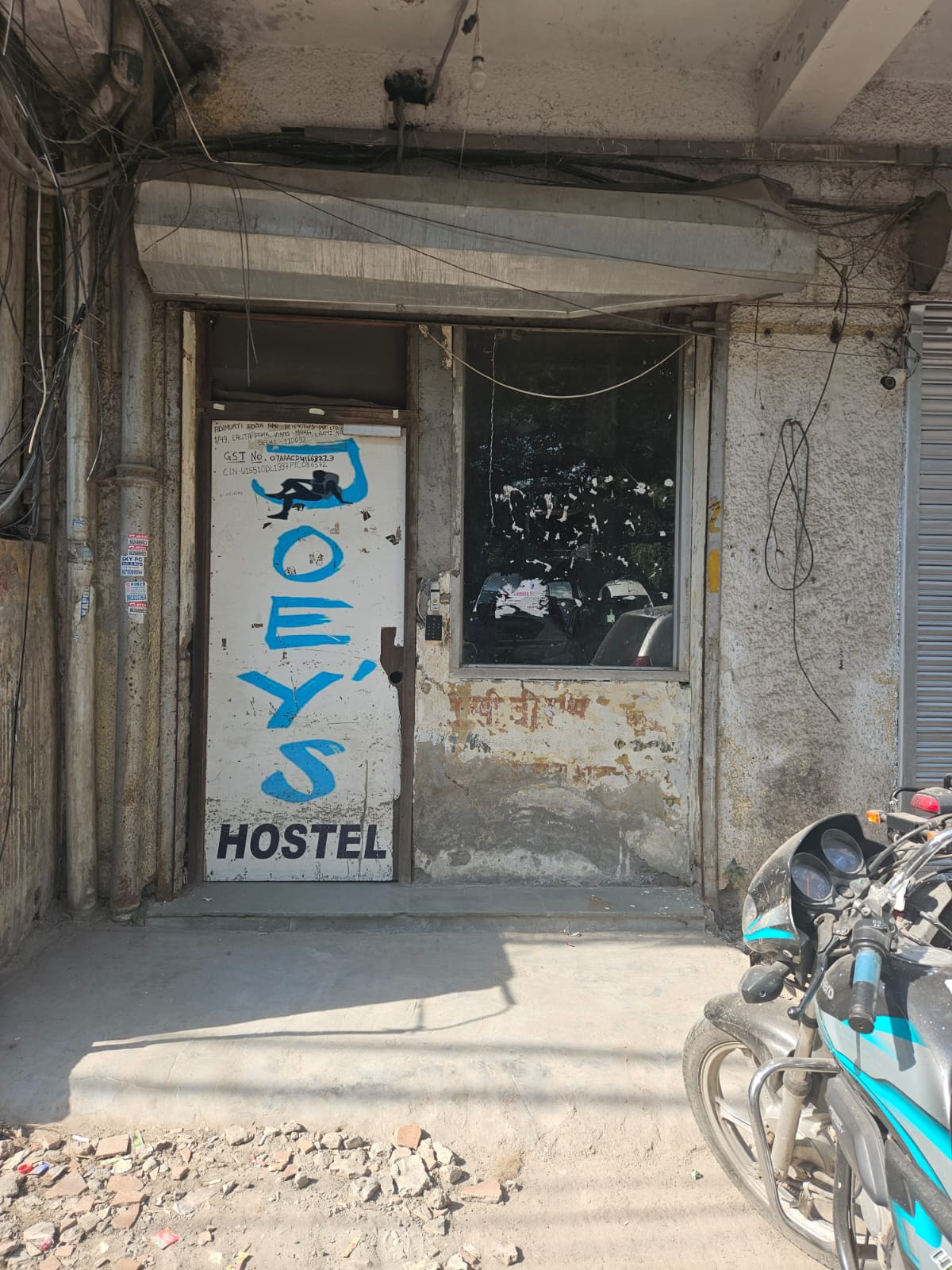
There are many hostels that offer mixed, men-only, and female-only dorms. I’d recommend going for the female-only dorms if you have the choice. I’ve personally stayed in a dormitory only once in India. It was a mixed dormitory in Rishikesh, and I didn’t mind it for the amount of time I spent there, as it was very safe for me and my belongings. However, people in and around the place were very loud, so I chose to avoid it for the rest of my journey. It’s a great way to get in touch with other solo travellers, who can then become your companions for going out and visiting the city together.
I’ve met many solo female travellers in India who stick to hostels for accommodation, and they’ve only told me positive stories and experiences about their time there. Do your research before booking and look for legit reviews about the place.
Hotels
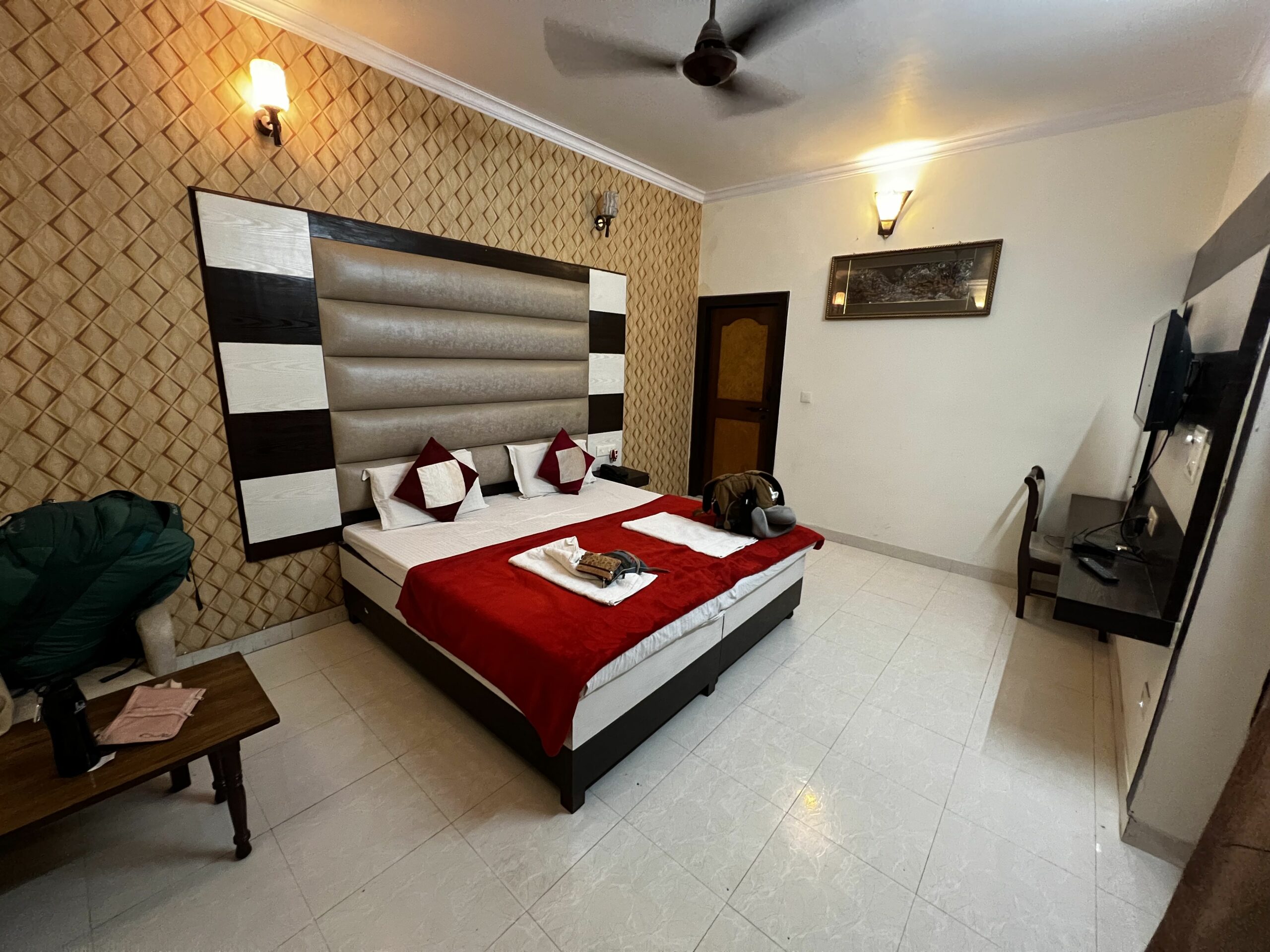
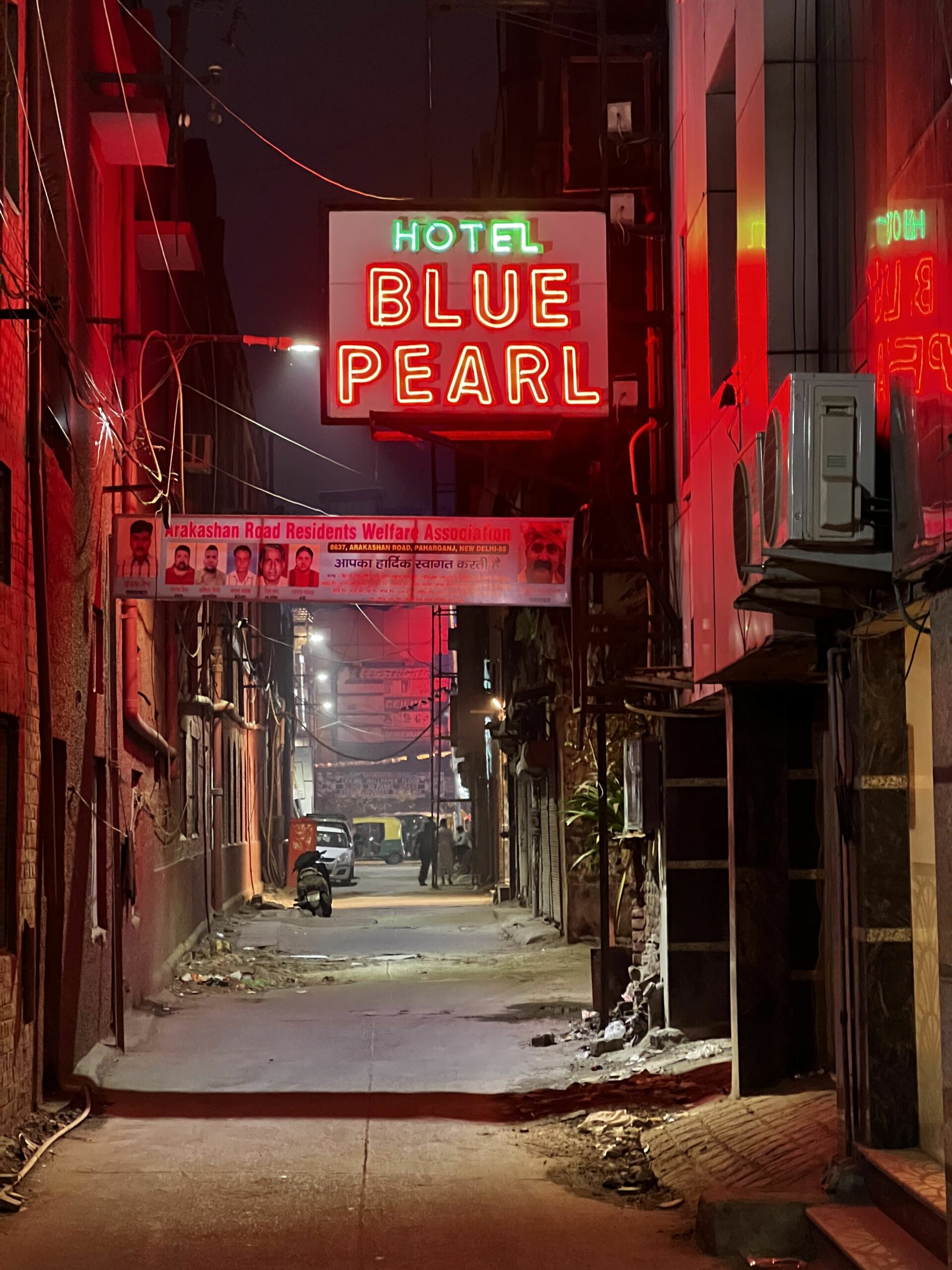
Hotels are generally very cheap in India, and I usually opt for them. Most hotels offer locks for the room, keeping your belongings safe from potential theft. I’ve heard some horror stories about hotels from other girls, though, who had bad experiences or felt unsafe in their hotels, making due research beforehand even more important. Thankfully, I personally never had those experiences, but it’s still important to look at the reviews, and the area it’s located, in and make sure that the place is legit. Try to avoid OYO hotels (as a woman) as they are often dirty, don’t match their online pictures, or have creepy staff.
Important note: there are many fake reviews on Google that push the rating of the hotel up. A good tip is to check the reviews for similar themes and check the 1-3 star reviews to see if there are any red flag words like “scam” etc. Anything with the word “scam” in more than 2-3 reviews should be avoided.
Guesthouses
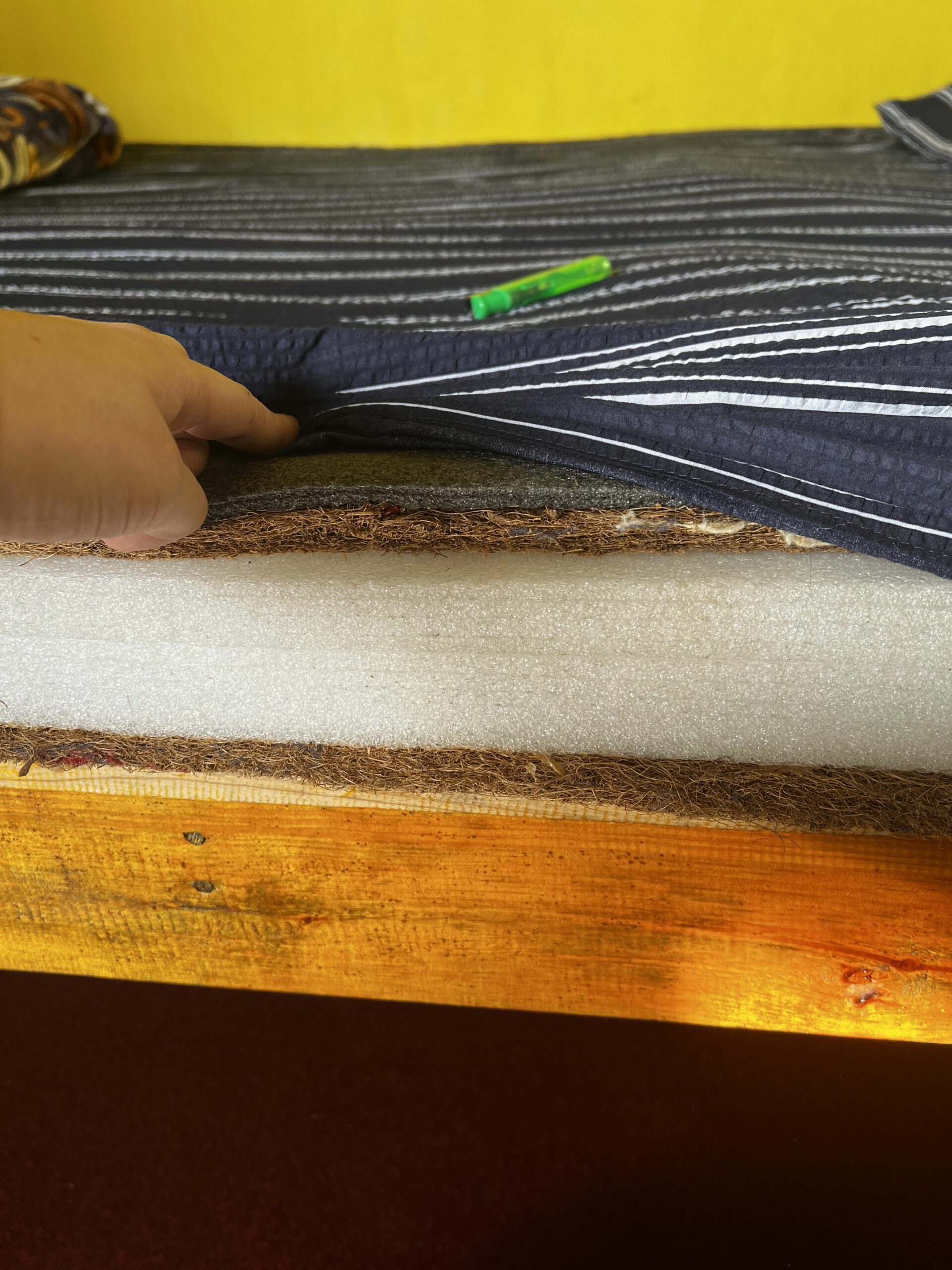
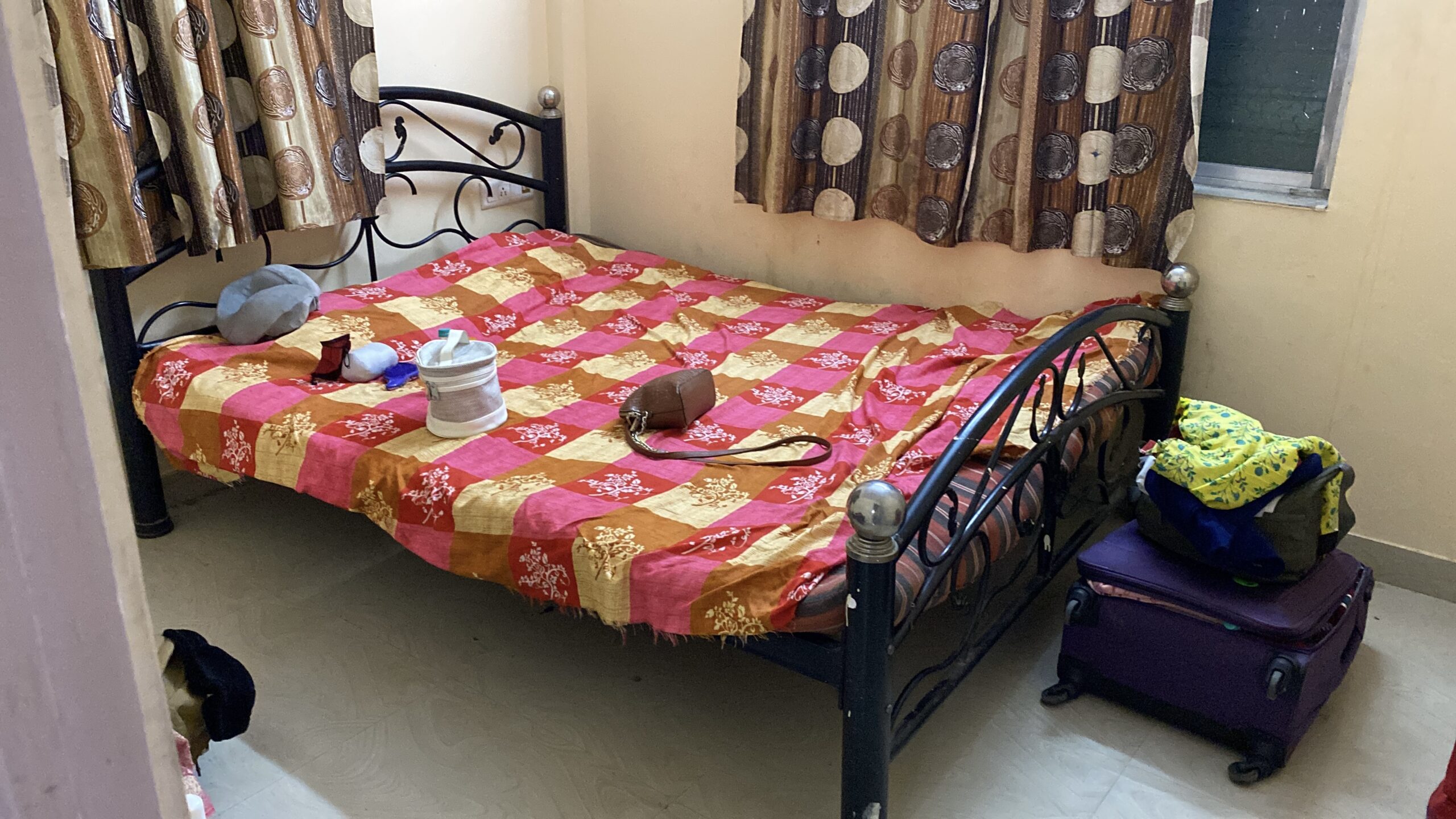
I’ve stayed in multiple guesthouses, and they all had one thing in common – incredibly uncomfortable and dirty beds. Maybe it was just my bad luck, but I haven’t had many guesthouses with decent beds. Most beds I encountered were made out of foam or mattresses that had probably been laying there uncleaned for years. While they weren’t comfortable, I still never felt unsafe. I have stayed in guesthouses without locks on the doors, though they were mostly in the remote Northeast of India. In that case, your belongings might not be as safe as the other options on this list. I’ve met other female travellers that have had great experiences with guesthouses – maybe I was just unlucky.
Rented Accommodation
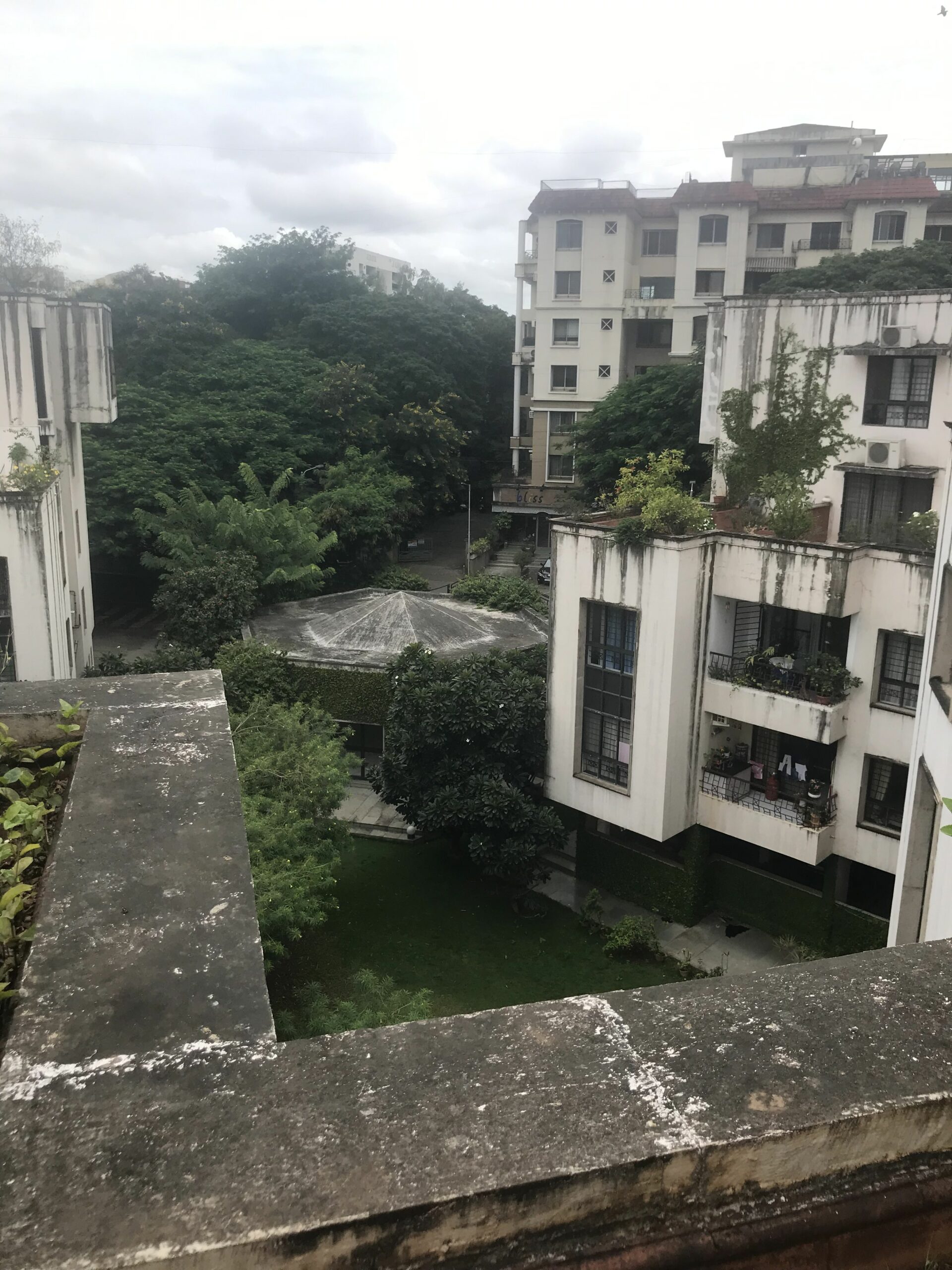
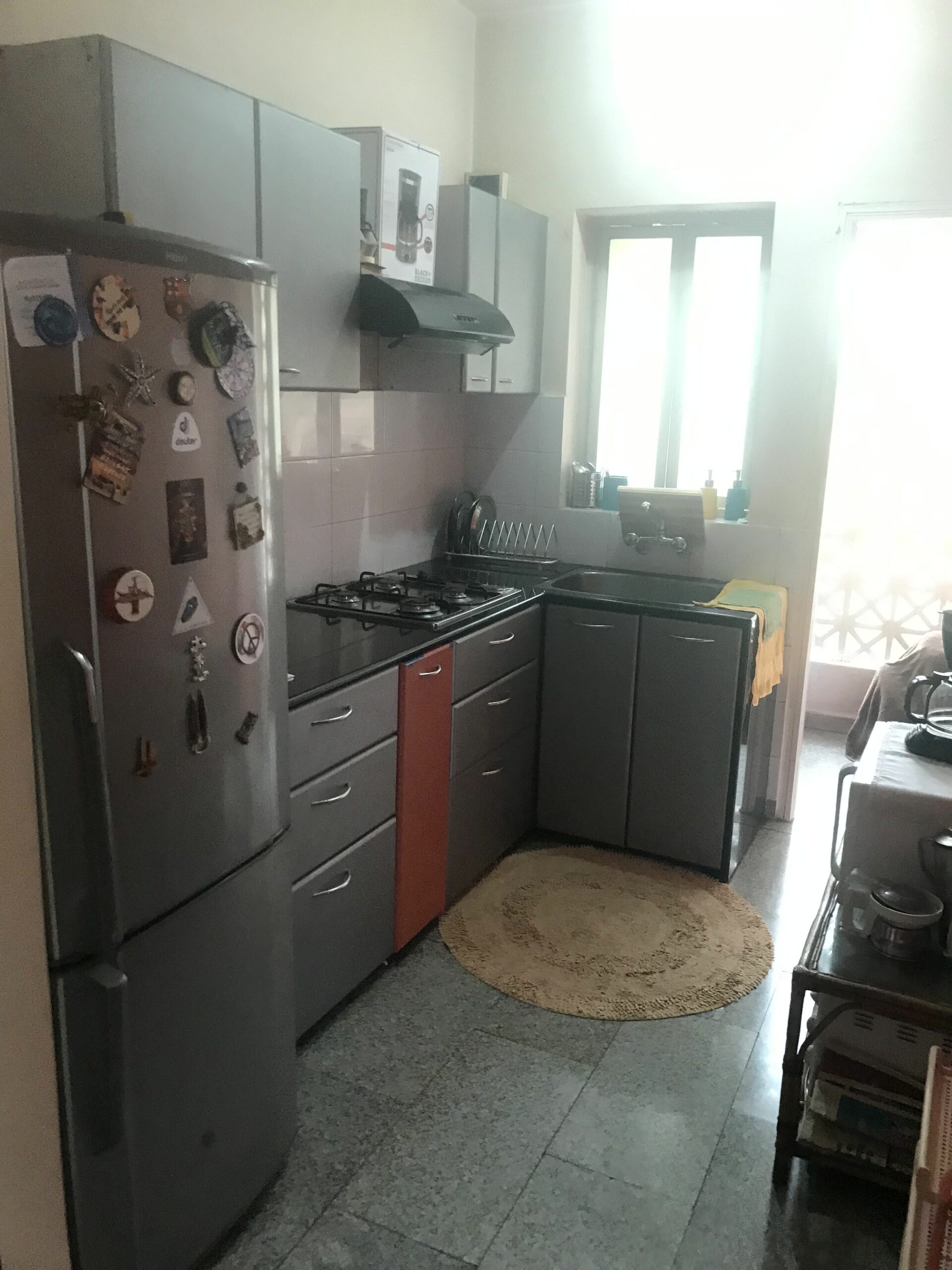
If you’re planning to stay long-term and aren’t planning on travelling around too much, it might be a good idea to rent an apartment. I have some experience renting apartments in India, and if you’d like to do the same, here’s a guide I wrote for digital nomads in India that goes in-depth into all the things you should keep in mind. If you do go for this option, make sure to choose accommodation within a gated society as they’re often safer, ensuring that no intruders can come within the society. This is, of course, the safest of all the options I mentioned above.
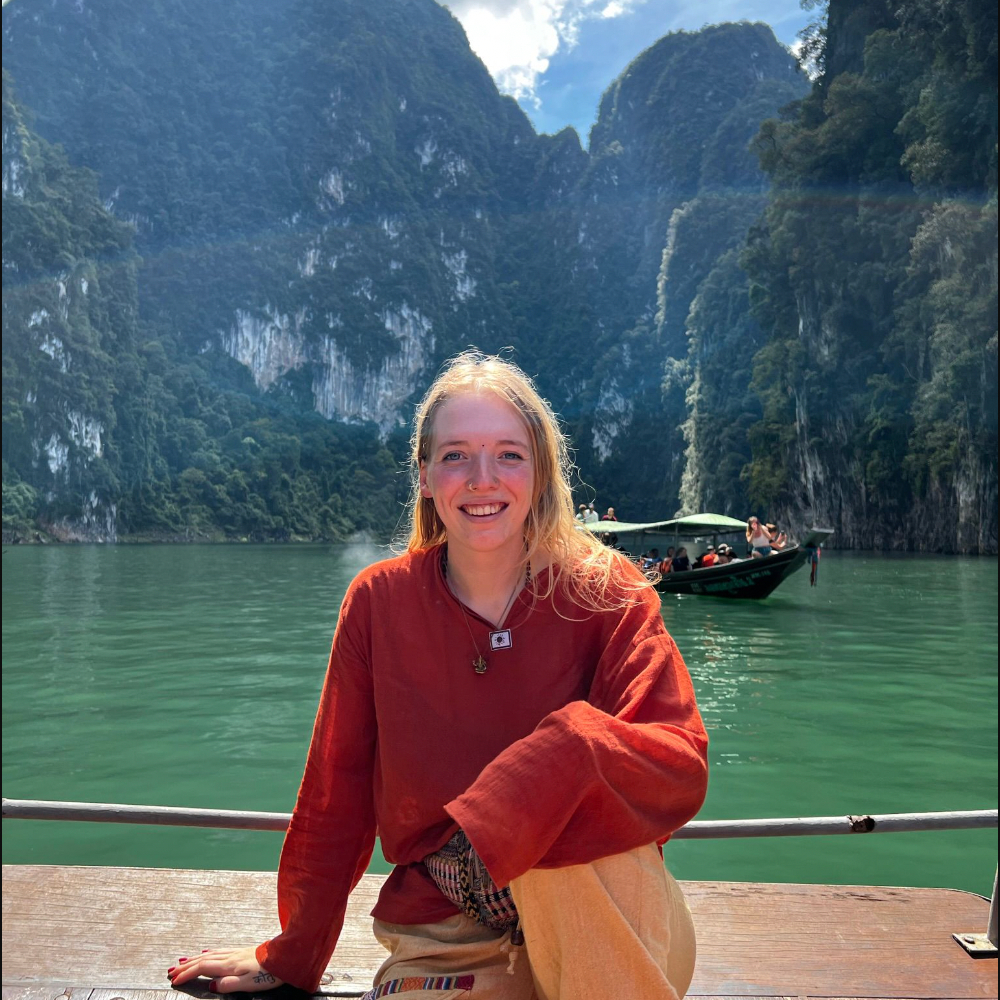
Jytte is a 22-year-old female adventurer from The Netherlands. She loves to fully immerse herself in the local ways of living, going ‘off the beaten path’ to truly experience the countries she visits and their unique way of life. Her wanderlust has taken her to Asia, with a particular focus on India. Here you’ll find her writing about all things India and Asia with a focus on digital nomadding there.
